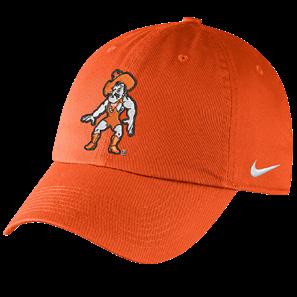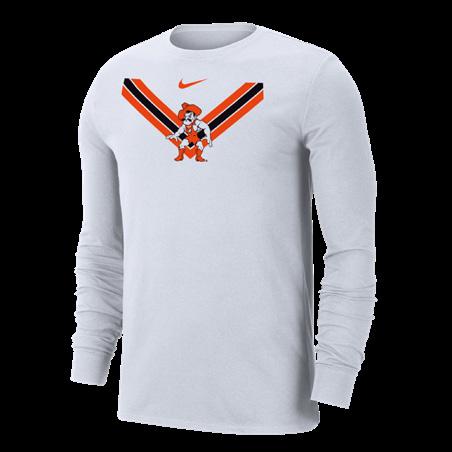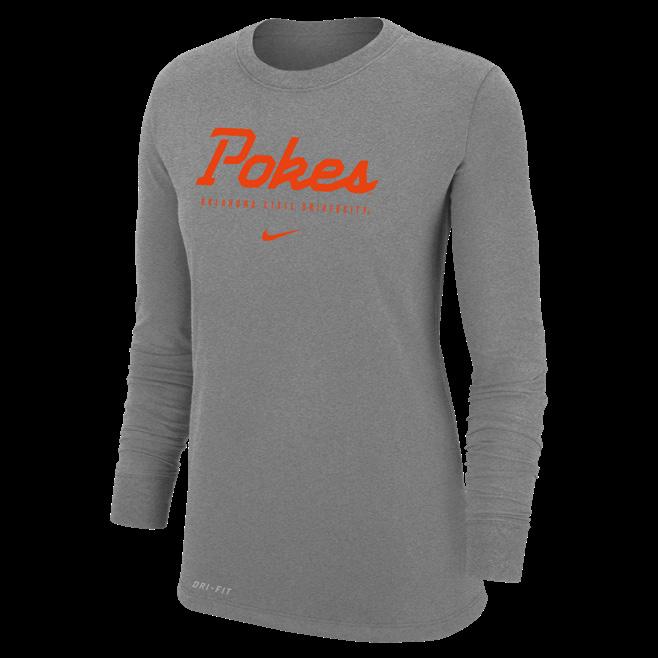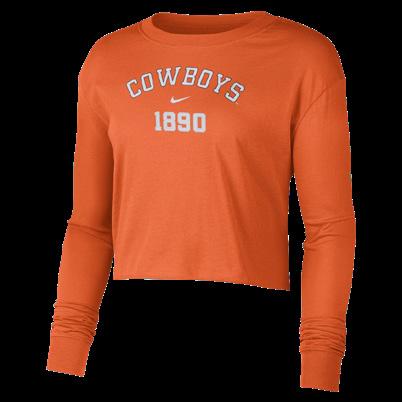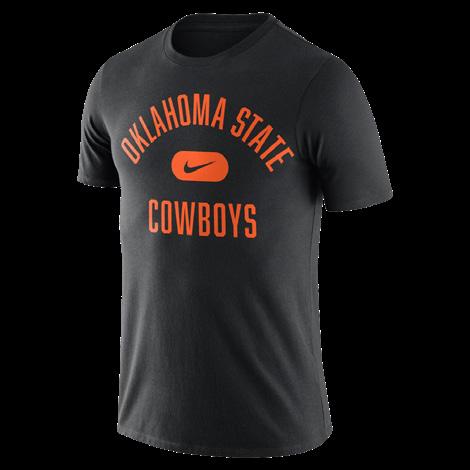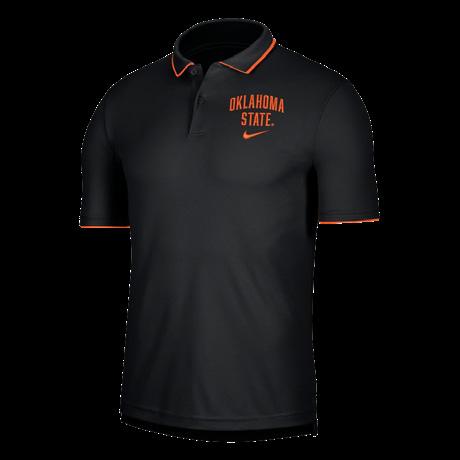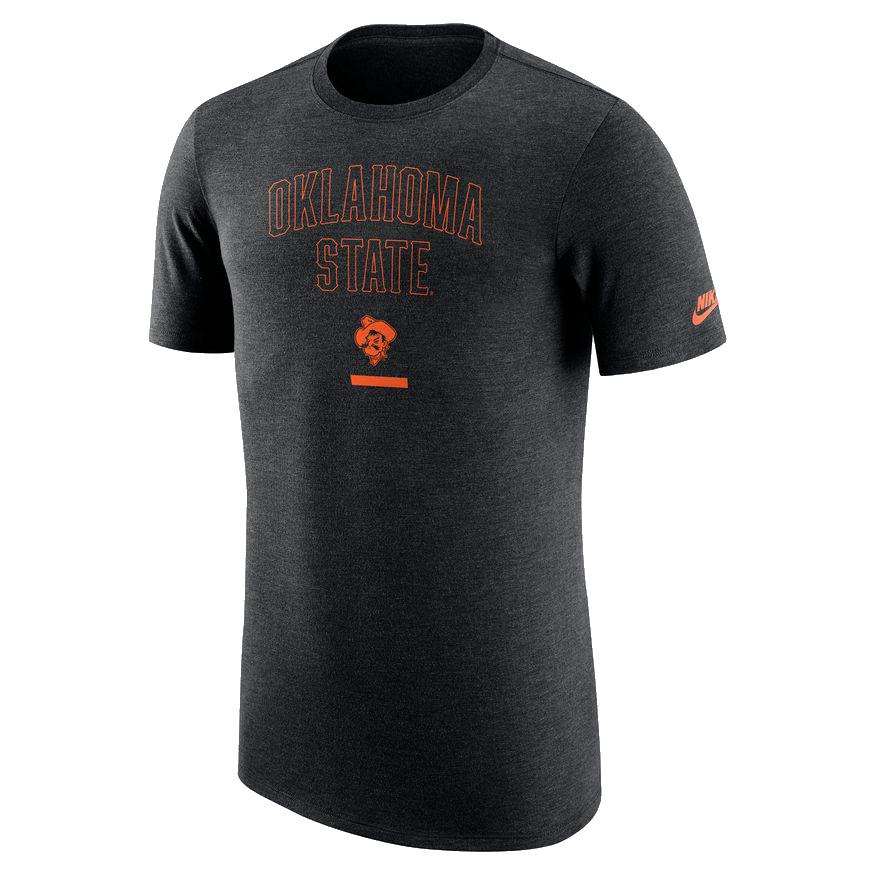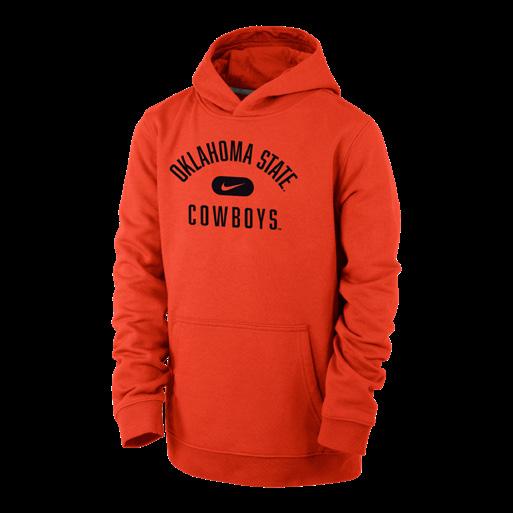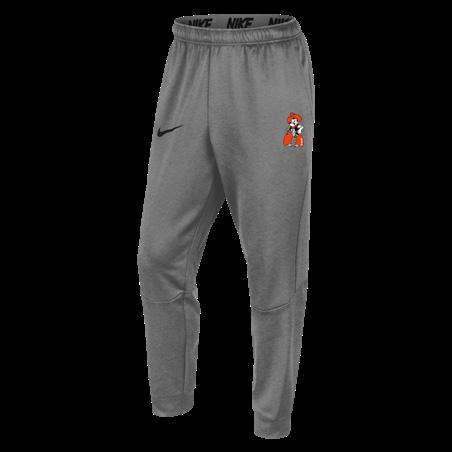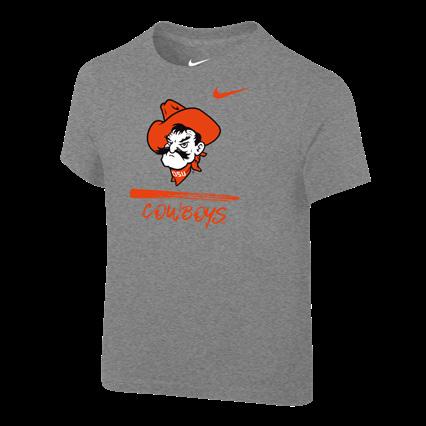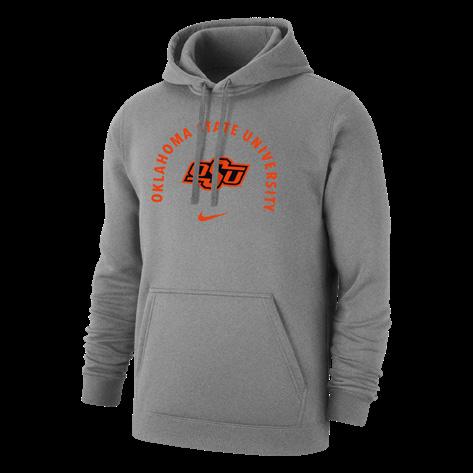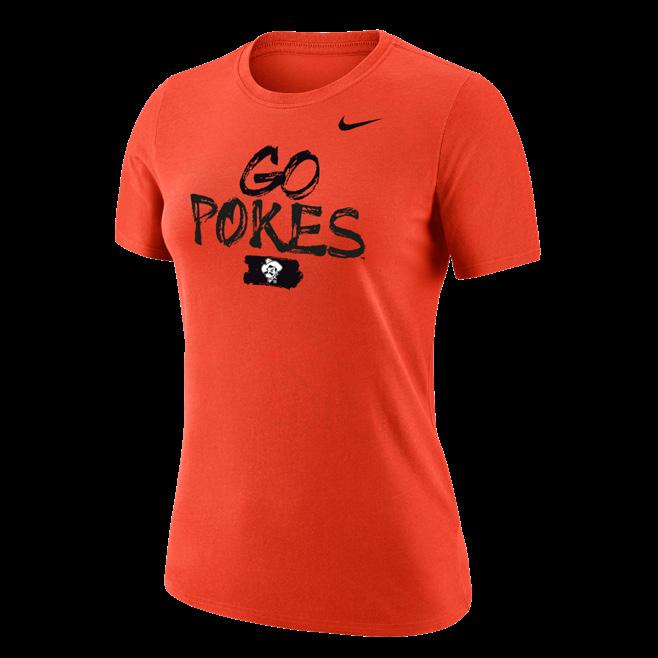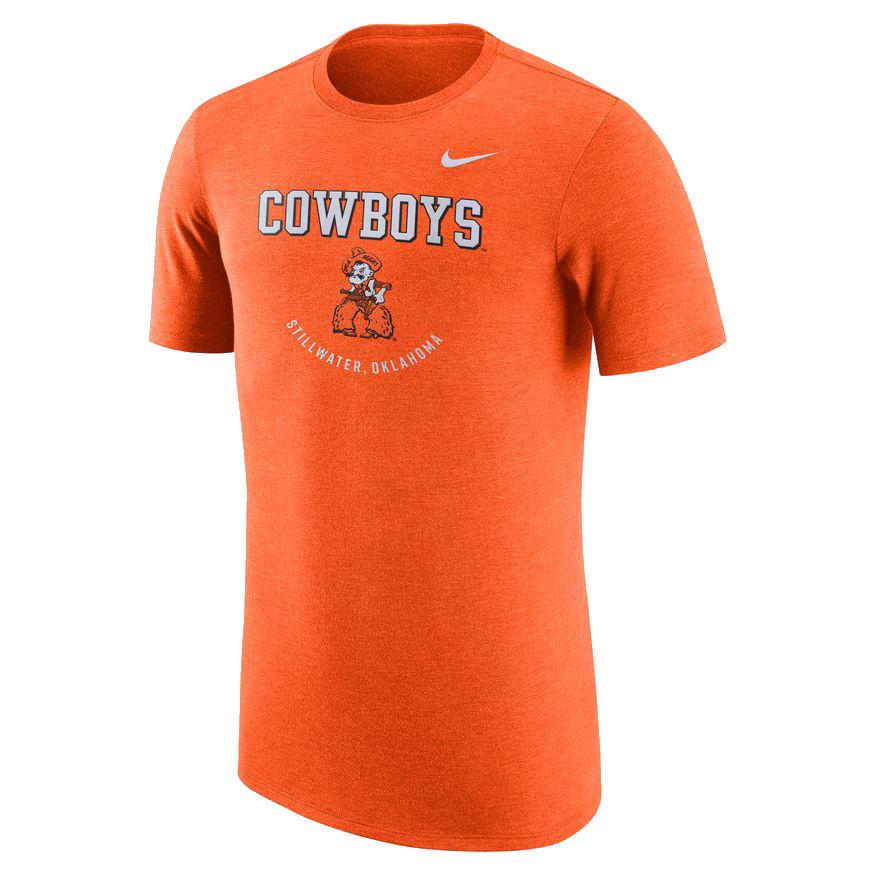JACIE HOYT

TAKING THE REINS IN COWGIRL COUNTRY




















How about this Bedlam talk, huh?
I come from an Oklahoma State family — a big extended family with lots of first cousins and aunts and uncles. And mostly they are OSU people. There are a few outliers, but we solve our di erences the old-fashioned way. We don’t invite them to family events — with funerals being the exception since no RSVPs are required.
The estranged family members (not really) have seen more Bedlam football wins than the core group of us dressed in orange. But they don’t get to enjoy them near as much.
So what exactly does the next iteration of Bedlam mean for my family and yours, and for the state?
Stay tuned, because quite frankly, we don’t know what it means or what Bedlam will look like. The consensus is that Bedlam is likely to continue in some form or other for most — and maybe all — of our athletic teams outside of football. Each head coach will have an opportunity to make that decision for themselves if they feel strongly, because each situation is di erent.
Take Cowgirl Soccer for example. OSU has dominated that Bedlam series since it launched its program in 1996. Continuing Bedlam would be simply for the benefit of the fans. OSU sold out the first Bedlam game in Neal Patterson Stadium with a crowd of 4,000, so there is something to be said for the Bedlam draw. No one is denying the fan aspect, the historical significance and just the old-fashioned sibling rivalry element that exists in Bedlam. But as far as strengthening the Cowgirl résumé for the NCAA Tournament, playing OU would probably be well down the priority list.
On the flip side is softball. Bedlam softball has become a hot ticket, a national rivalry, one with implications that reach far beyond the state line. Taking away Bedlam
BY KE VIN KLINT WORTH S e n i o r A s s o ci a te At h l e ti c D i r e c to rsoftball takes away one of the marquee events for the sport each spring. Do the Bedlam schools need the series to continue in order build a stronger postseason résumé? Can the two schools find a common weekend when they are in separate leagues? It’s much easier said than done and all part of the i y realignment collateral damage.
The same situation exists for baseball. The Cowboys lead the all-time baseball series, and head coach Josh Holliday has been a particularly big thorn in the side of the Sooners. But will baseball be regulated to a couple of Tuesday nights? We don’t know yet. Could those two programs, once they are in separate conferences, suddenly become opponents in an NCAA regional or super regional?
What about the winter sports? The largest crowd ever to see a college women’s basketball game in this state was Bedlam in Gallagher-Iba Arena. It was a 13,611-sellout on the night Andrea Riley beat the Sooners almost single-handedly. The men’s games are circled on the calendar for both programs. And the “Bedlam Series” was launched with wrestling as we all know. From the OU perspective, can Sooner wrestling remain relevant in a new league without Bedlam? It’s a knife that cuts both ways.
The questions exist right down the line because the Bedlam rivalry exists in every sport from the golf and tennis programs to track and cross country. For men’s programs and women’s programs. It’s part of the fabric of the state of Oklahoma. It’s a rivalry that predates statehood.
In a completely unrelated note, OSU has won the Bedlam Cup (all-sports trophy) eight times in the last nine years. It is a tidbit that has nothing to do with the current topic, but it seems like information that should be shared often.
To be clear, Bedlam is not endangered because of Oklahoma State. There can be no debate on that topic. As Mike Gundy told the media during the fall, when certain schools were discussing the pot of gold waiting for them in another conference, do you think Bedlam came up? We can’t know for sure, but the guess is that the answer starts with a “doubt” and ends with a “ful.”
For the record, Oklahoma State has never said no to Bedlam football, despite what you may have read. What OSU has said is: “How can this work when the Oklahoma State non-conference football schedule is booked through 2037?” At this writing, neither the new Big 12 nor the new SEC have decided how many conference games will be played each year. That uncertainty makes scheduling non-conference games even more di cult. A Bedlam game here or there doesn’t seem to resolve much of anything.
Should Oklahoma State annihilate its future non-conference schedules — most all of which were built while two conference schools were plotting to leave — to accommodate one of those schools? Should Oklahoma State pay an expensive buyout to break scheduled non-conference series with Arkansas,
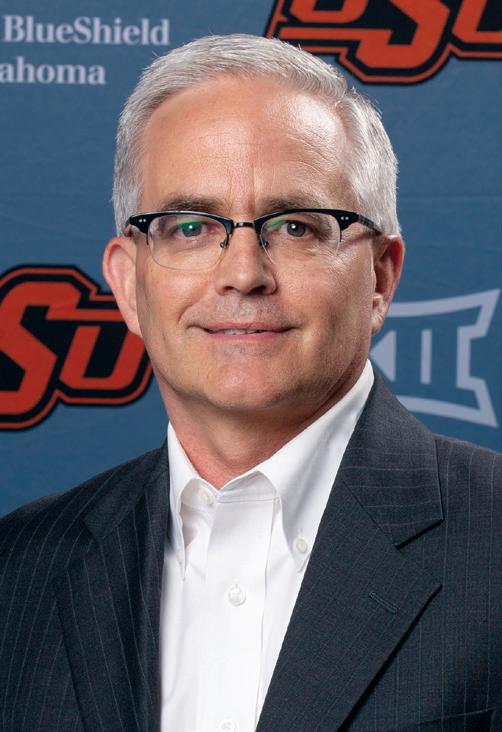
Alabama, Nebraska, Colorado and Oregon to accommodate OU’s move to a new league? And what about the eight-game series with Tulsa, which was scheduled when Oklahoma State had no knowledge of Bedlam being endangered? It’s not just an OSU problem. No doubt the Sooners would have to do some serious schedule-whittling as well, although they have the luxury of losing scheduled non-conference games against future SEC opponents.
It seems clear Bedlam football, at best, is headed for a pause. Scheduling in college athletics in general, and in football specifically, is not easy. Games are scheduled far in advance because if they aren’t, there are few attractive options. Through hard work and diligence, Oklahoma State has put together the most attractive stream of non-conference visitors in its history, all meant to supplement the annual rivalry game, not replace it.
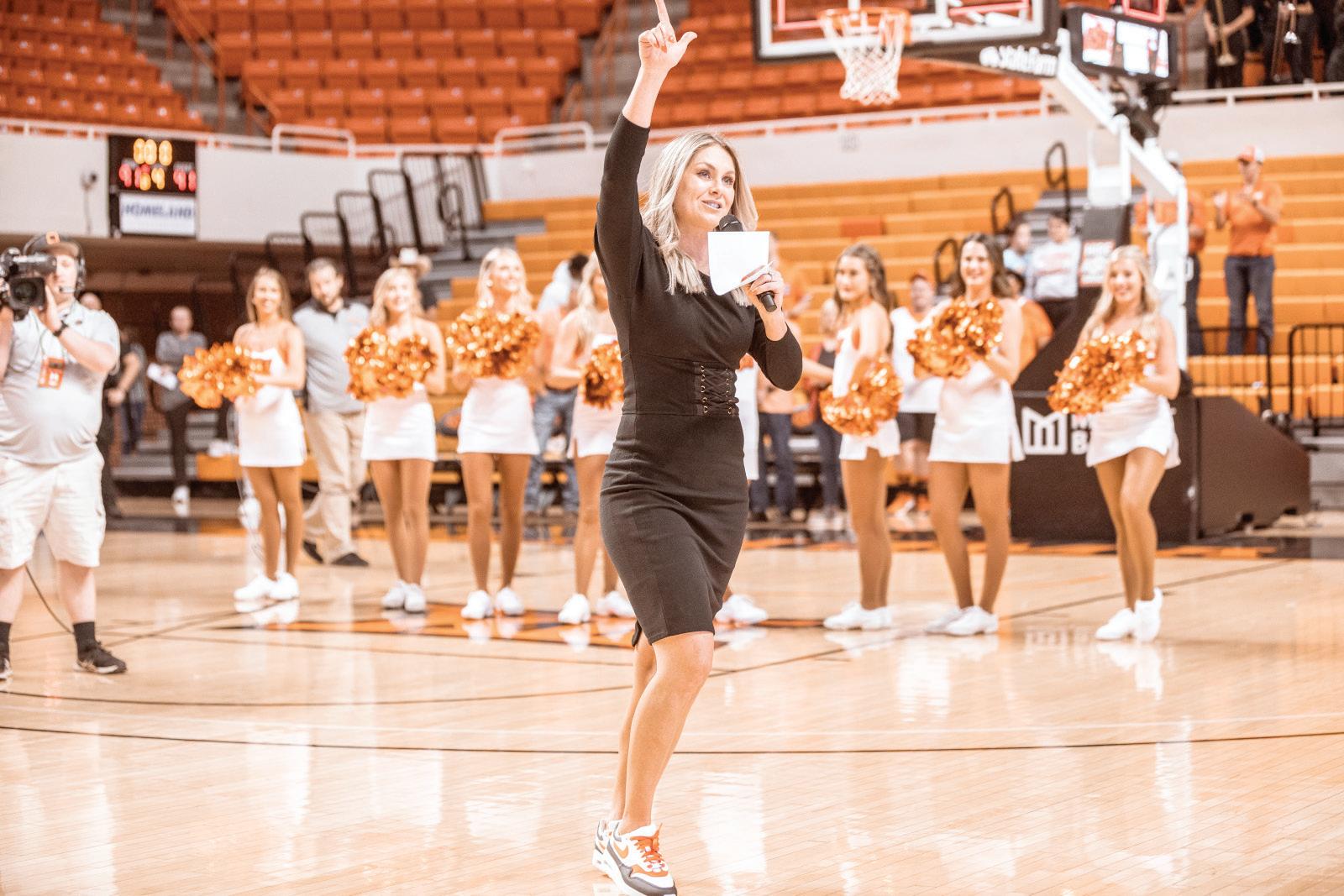
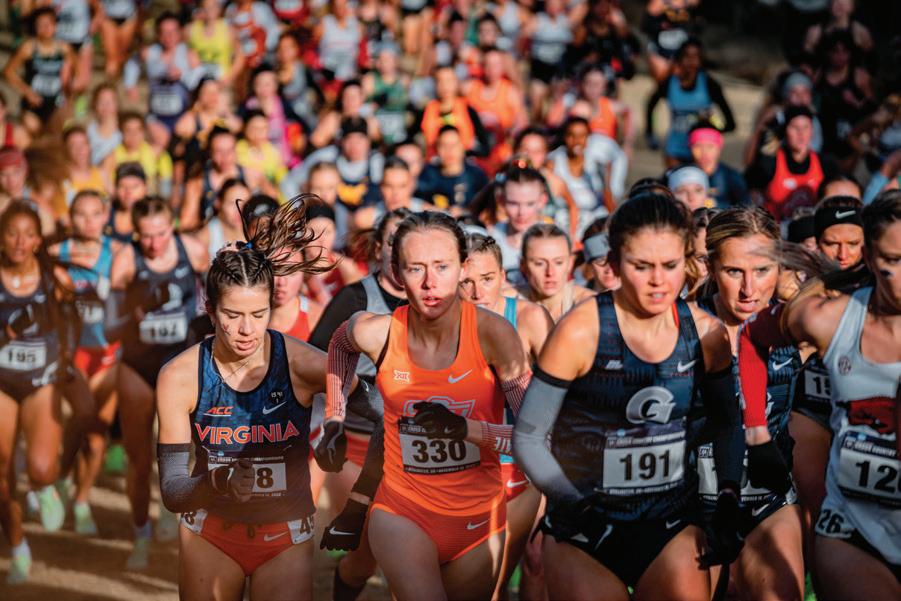

As unfathomable as it may have seemed just a few years ago, it’s possible that we may have to live without Bedlam football for a while. What do we get in return? Maybe all of us can spend the holidays with the entire family.
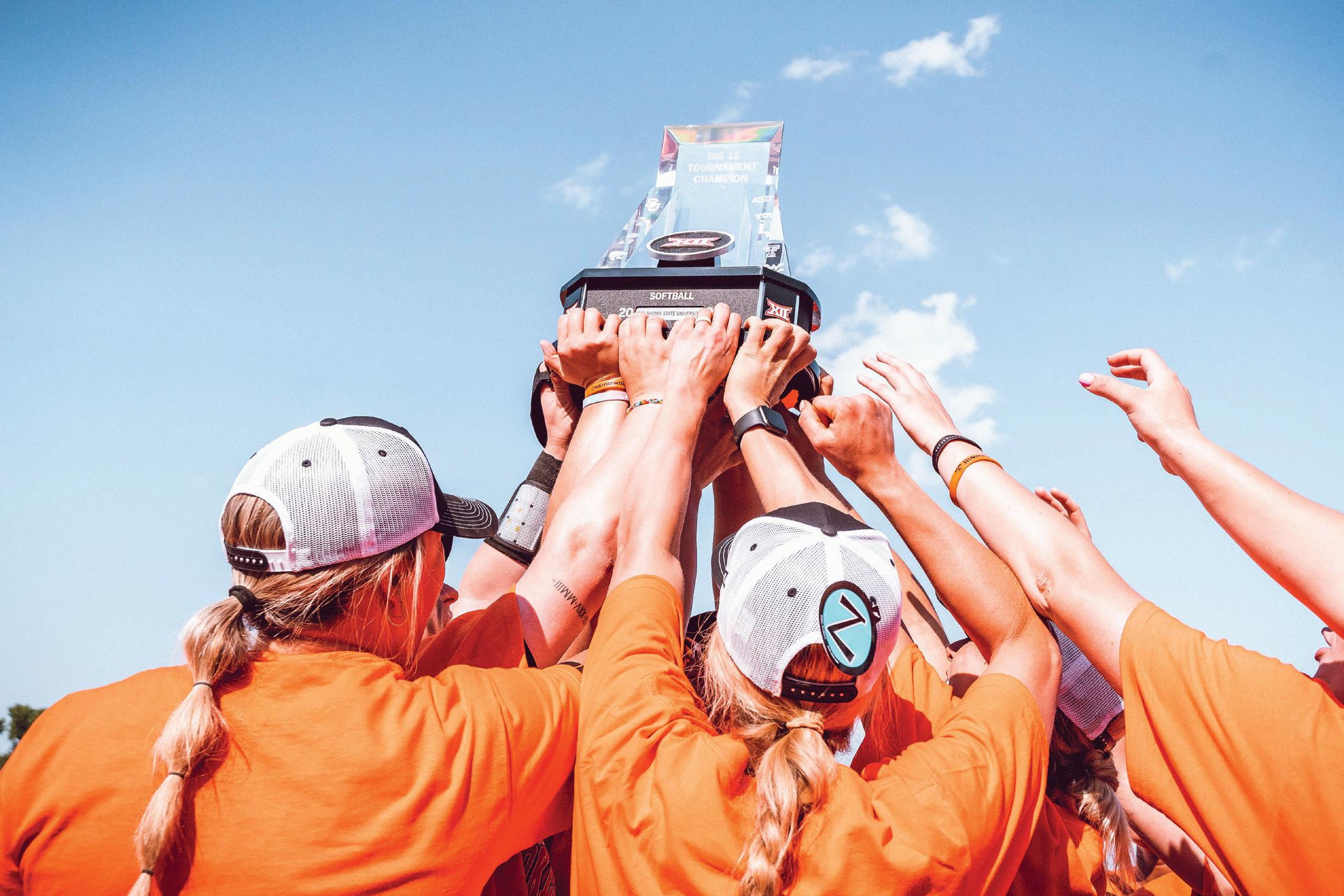
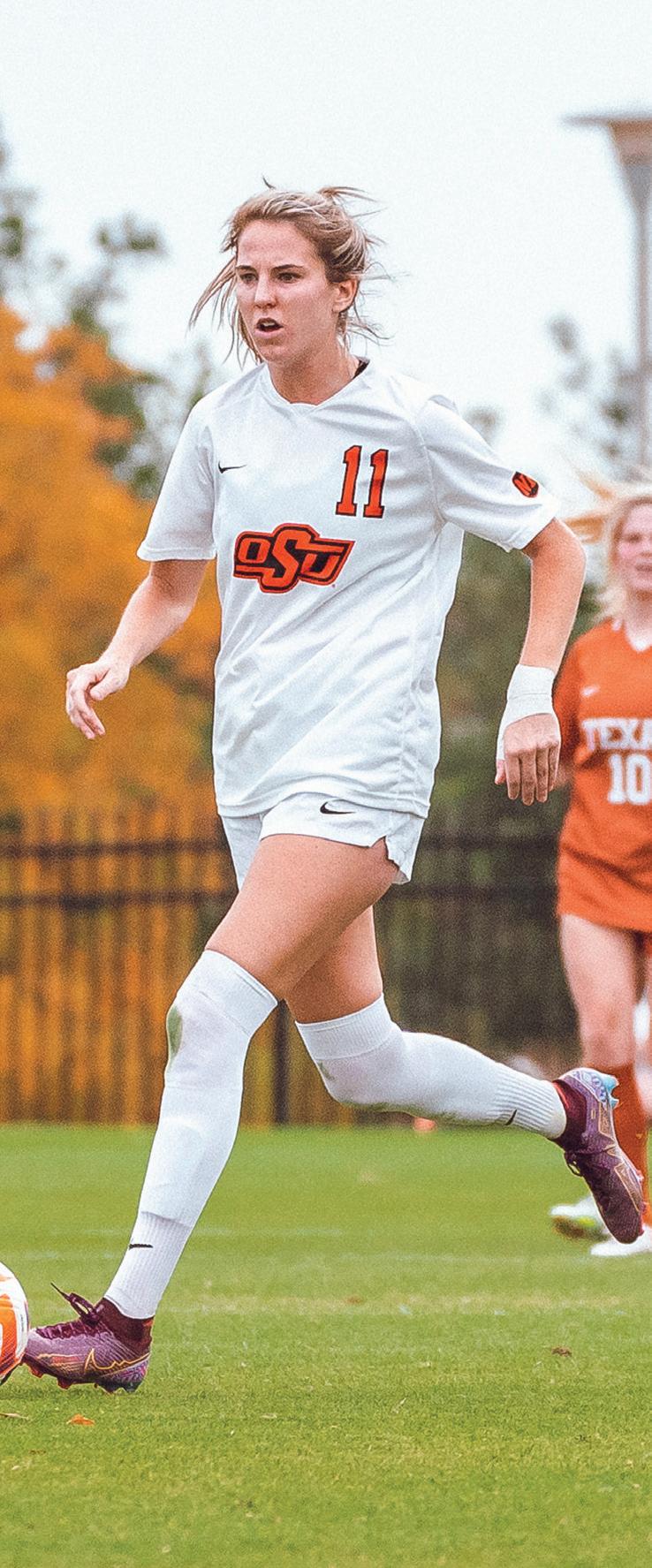


EDITOR-IN-CHIEF / SENIOR ASSOCIATE ATHLETIC DIRECTOR KEVIN KLINTWORTH SENIOR ASSOCIATE ATHLETIC DIRECTOR JESSE MARTIN ART DIRECTOR / DESIGNER JORDAN SMITH
PHOTOGRAPHER / PRODUCTION ASSISTANT BRUCE WATERFIELD ASSISTANT EDITOR CLAY BILLMAN CONTRIBUTING PHOTOGRAPHERS
CLAY BILLMAN, BEN COHEN, MARY ELIZABETH CORDIA, JEROD HILL, GARY LAWSON, MAX MOODY, HANNAH PETERS, RYAN SCHROEDER, CAULEN SPENCER, CARTER STANTON CONTRIBUTING WRITERS CLAY BILLMAN, HALLIE HART, GAVIN LANG, WADE MCWHORTER, KEVIN KLINTWORTH
Development (POSSE) | 405.744.7301 P
ASSOCIATE AD / ANNUAL GIVING
ELLEN AYRES ASSISTANT AD / ANNUAL GIVING BRAKSTON BROCK PUBLICATIONS COORDINATOR CLAY BILLMAN
ASSISTANT DIRECTOR OF ANNUAL GIVING STETSON DEHAAS
ASSOCIATE AD / DEVELOPMENT MATT GRANTHAM ASSOCIATE AD / DEVELOPMENT DANIEL HEFLIN
SENIOR ASSOCIATE AD / EXTERNAL AFFAIRS
JESSE MARTIN
SENIOR ASSOCIATE AD / DEVELOPMENT
SHAWN TAYLOR
LARRY REECE ASSOCIATE AD / DEVELOPMENT
ASSISTANT DIRECTOR OF ANNUAL GIVING ADDISON UFKES ATHLETICS PROJECT MANAGER JEANA WALLER
OSU POSSE
102 ATHLETICS CENTER STILLWATER, OK 74078-5070 405.744.7301 P 405.744.9084 F OKSTATE.COM/POSSE @OSUPOSSE POSSE@OKSTATE.EDU
ADVERTISING 405.744.7301 EDITORIAL 405.744.1706
At Oklahoma State University, compliance with NCAA, Big 12 and institutional rules is of the utmost importance. As a supporter of OSU, please remember that maintaining the integrity of the University and the Athletic Department is your first responsibility. As a donor, and therefore booster of OSU, NCAA rules apply to you. If you have any questions, feel free to call the OSU O ce of Athletic Compliance at 405-744-7862 Additional information can also be found by clicking on the Compliance tab of the Athletic Department web-site at okstate.com
Remember to always “Ask Before You Act.”
Respectfully,
BEN DYSON ASSOCIATE ATHLETIC DIRECTOR FOR COMPLIANCE
Donations received may be transferred to Cowboy Athletics, Inc. in accordance with the Joint Resolution among Oklahoma State University, the Oklahoma State University Foundation, and Cowboy Athletics, Inc. POSSE magazine is published three times a year (Fall, Winter, Spring) by the Oklahoma State University Athletic Department and the POSSE, and is provided to current members of the POSSE in print or digital format based on annual giving level. Magazine subscriptions available by membership in the POSSE only. For membership information, visit okstate.com/posse.To change a mailing address, call 405-744-7301 or email posse@okstate. edu. Postage paid at Stillwater, OK, and additional mailing offices. Oklahoma State University, in compliance with Title VI and VII of the Civil Rights Act of 1964, Executive Order 11246 as amended, and Title IX of the Education Amendments of 1972 (Higher Education Act), the Americans with Disabilities Act of 1990, and other federal and state laws and regulations, does not discriminate on the basis of race, color, national origin, genetic information, sex, age, sexual orientation, gender identity, religion, disability, or status as a veteran, in any of its policies, practices or procedures. This provision includes, but is not limited to admissions, employment, financial aid, and educational services. The Director of Equal Opportunity, 401 General Academics Building, OSU, Stillwater, OK 74078-4069; Phone 405-744-1156; email: eeo@okstate.edu has been designated to handle inquiries regarding non-discrimination policies. Any person (student, faculty or staff) who believes they are experiencing discrimination may discuss his or her concerns and file informal or formal complaints of possible violations of Title IX with OSU's Title IX Coordinator, 405-744-1156.
This publication, issued by Oklahoma State University as authorized by the Senior Associate Athletic Director, was printed by Modern Litho at a cost of $3.04 per issue: 3,000. | December 2022 | Copyright 2022, POSSE magazine. All rights reserved.
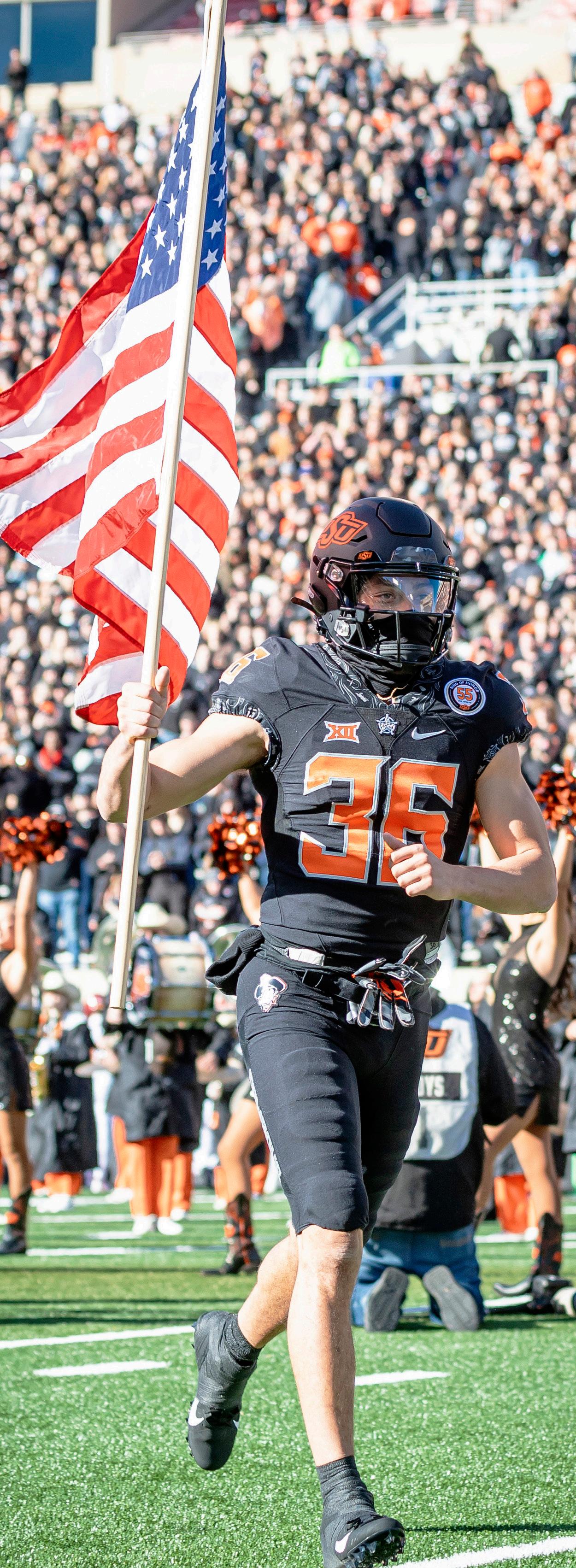
AT OSU, OPPORTUNITIES ARE ABUNDANT. We provide great scholarship programs to help students elevate their success and academic excellence.
To ensure consideration for most OSU scholarships, encourage the high school senior you know to apply by February 1.

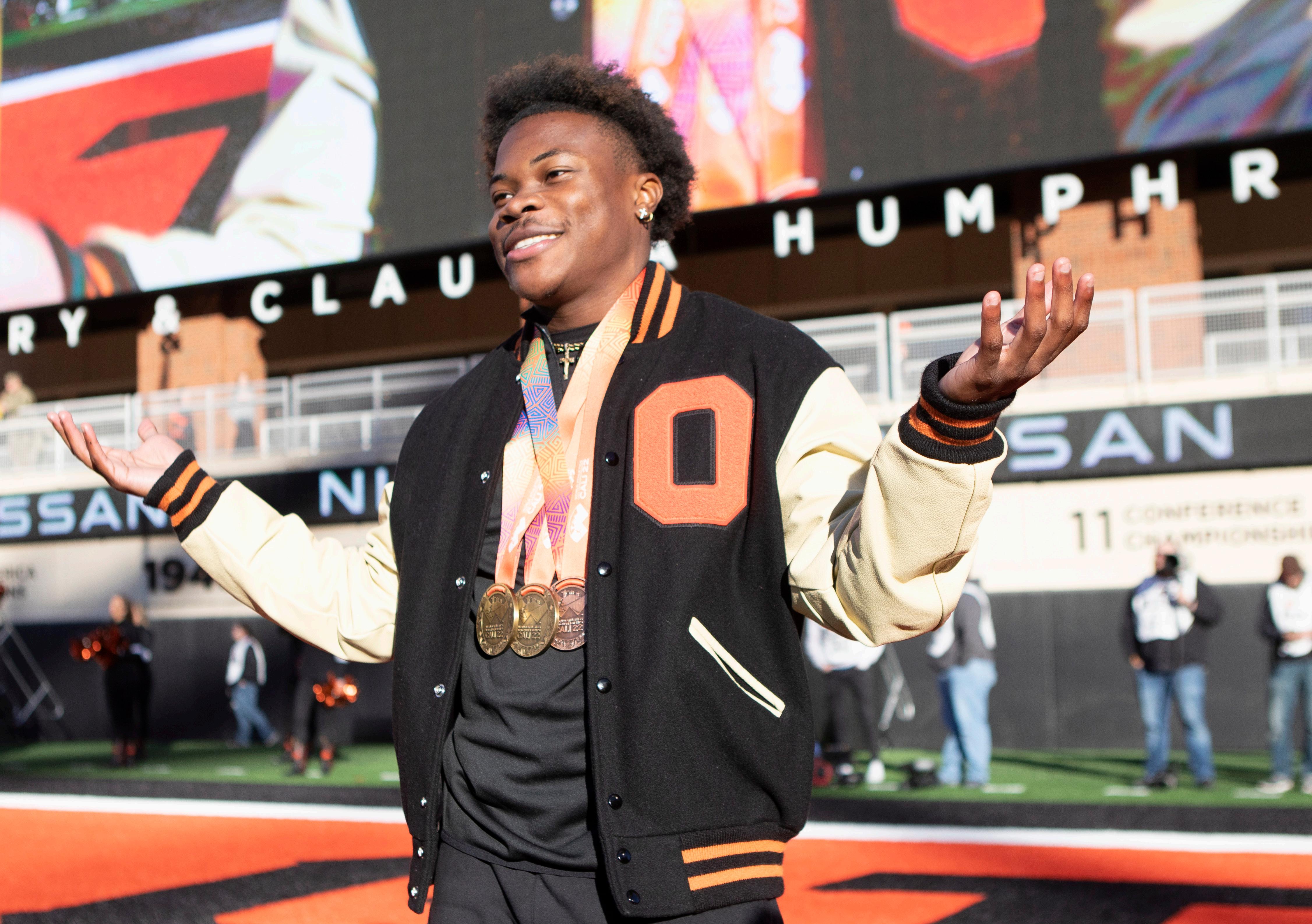
Cowboy Track & Field's Charlie Bartholomew was recognized during the Iowa State football game for his medal-winning summer. The sophomore from McKinney, Texas, helped Team USA capture two golds and a bronze in relay events at the World Athletics U20 Championships in Cali, Colombia. Last season, Bartholomew broke OSU's 50-year-old school record in the outdoor 400 meters with a time of 45.40, eclipsing the mark set by Dennis Schultz in 1972.

POSSE member Dee Wint from the "Cowboy Cooks" in Altus, Okla., stirs up some shrimp gumbo prior to Oklahoma State's game vs. Texas Tech.
The Cowboys won the game 41-31, while OSU tailgaters were the big winners, enjoying one of the best campus gameday atmospheres in the country. To join the party next season, visit okstate.com/tailgating.
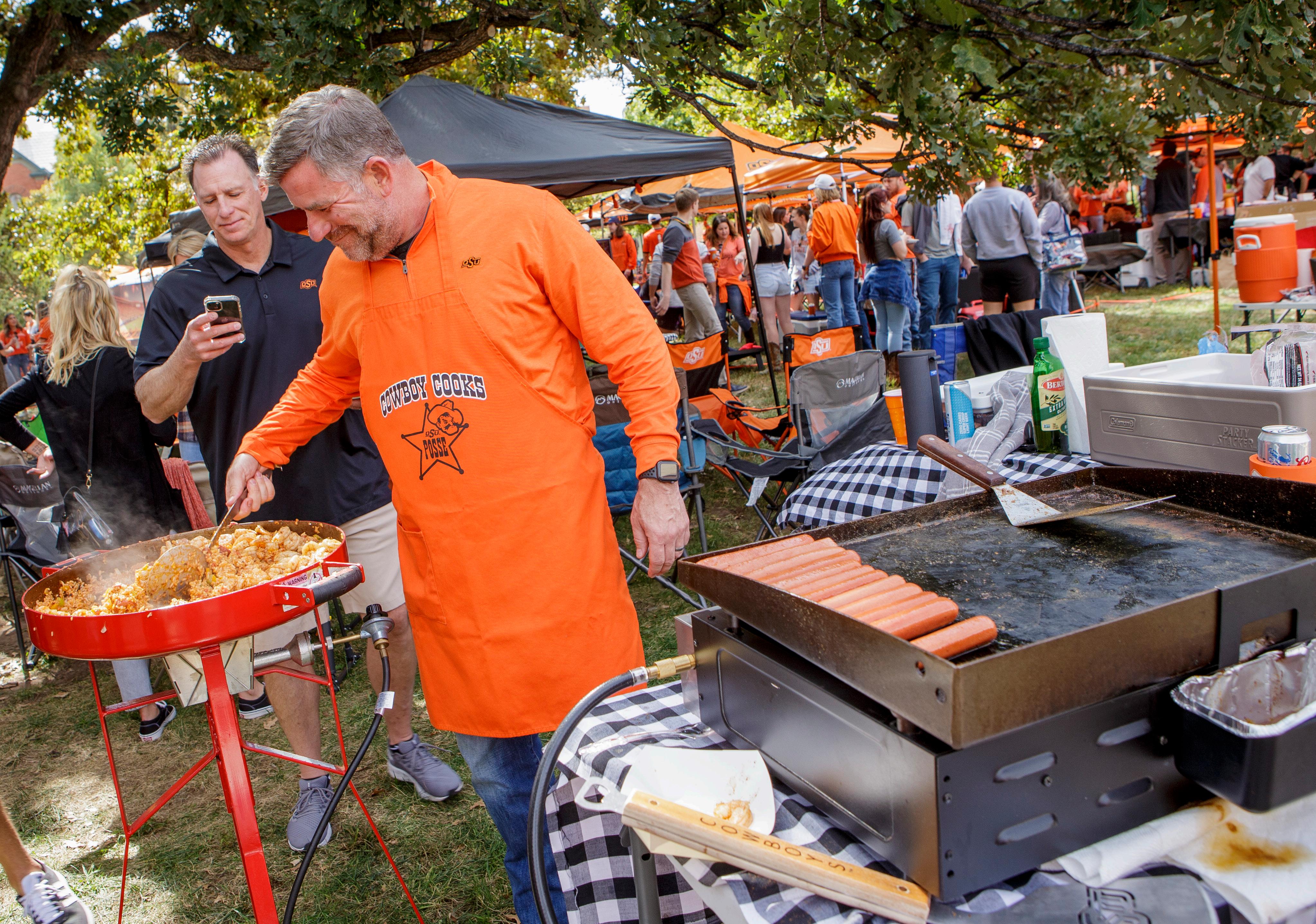



During an early morning workout, Mike Boynton realized someone was running laps on the indoor track that surrounded him.
The person passed by once, then another time, visible through the weight room’s expansive windows. Striding ahead, he stood taller than any of the athletes Boynton typically saw in Gallagher-Iba Arena.
The Oklahoma State men’s basketball coach had to do a double take.
“Is that Moussa?” he thought. Boynton had plenty of reasons to doubt his initial hunch.

From day one, Cisse’s OSU career was o and running.
And he’s still going.
The junior from Conakry, Guinea, announced his decision in March to return to the Cowboys instead of going through the NBA Draft process. His choice to stay at OSU reflects his loyalty to Boynton, to his teammates and to the fanbase.
Most of all, it shows his determination to stay true to himself.
Cisse heard voices in the basketball world, many outside OSU, trying to sway him toward a pro career. The opinions
He left home at age 14, moving to a di erent continent and immersing himself in the United States’ largest metropolis. His college career took him from Memphis to OSU, where he’s established himself as a dominant shot-blocker and boosted his status as an NBA prospect. At the same time, he was grieving the death of a beloved family member — his mother, Saran Kante — who taught him a lesson he never forgets.
“As you’re getting older, things are gonna start getting hard,” Cisse said, remembering her wisdom. “I’ve seen that now. Things are really getting hard, but you just gotta fight through it.”
Amid the challenges, Cisse found something at OSU that led him to stay — happiness. He thrives with his teammates on the historic maple floor of Eddie Sutton Court. His constant dedication to improvement, evident on his first day with the Cowboys, has sent him on a fulfilling journey.
It’s a path he never expected to follow as someone who didn’t play basketball until his teenage years.
pitch. His older brothers, noticing his increasing height, realized basketball could be a good fit for him.
So three months after his 14th birthday, Cisse took a giant leap in pursuit of a dream.
His mom understandably had concerns.
Her teenage son, not yet of legal driving age in the United States, was moving more than 4,000 miles away to New York City, a megalopolis teeming with millions of people. Many New Yorkers would not speak French so he would need to learn a new language. He had grown up in a tight-knit household with five older sisters and three older brothers, often turning to them for advice.
The support of a sibling helped his case. Bah realized Cisse would have too much catching up to do if he waited to play basketball in the United States until college. He would benefit from going earlier, Bah explained, so Kante agreed to let it happen.
When Cisse arrived at LaGuardia Airport on a chilly day in Queens, he wondered if he made the right decision. December in Guinea was never this cold, so Cisse stepped o the airplane without winter layers in an unfamiliar place.
He called his mom, and they cried together.
“I was like, ‘I want to go back home,’” Cisse said.
Cisse wishes he had a video compilation of his earliest dunk attempts.
As a talented big man who has slammed the ball through the hoop numerous times in Gallagher-Iba Arena, he laughs about his beginner days.
As an adolescent, Cisse was proud of himself. He didn’t care about the intricacies of the game, he said. He just wanted to dunk
Cisse practiced over and over, springing toward the hoop until he finally had the timing and coordination for his best Air Jordan impression. Although he doesn’t have a highlight reel — or blooper reel, he might say — of every dunk, he eagerly sent a video to older brother Zaynoul Bah as evidence of his new skill.
Bah had played basketball at Birmingham Southern College in the United States. But in Guinea, their home nation on the west coast of Africa, Cisse had little exposure to the sport.
Instead of dribbling, he was accustomed to kicking a ball.
“It’s part of the culture to play soccer,” Cisse said. “As soon as you come back from school, put your stu up and put your cleats on and go to the soccer field. That’s what everybody does.”
As a young winger, Cisse towered over his peers on the
The first day was overwhelming, yet Cisse didn’t hop back on a plane. His brother Mohamed, who joined him at the airport, bought him a jacket. Although Cisse never developed a fondness for cold weather, he immediately loved pizza in the Big Apple.
And his new favorite sport was as popular in New York as soccer was in Guinea.
Cisse played basketball at St. Benedict’s Preparatory School and then at Christ the King High School. He played basketball on the AAU circuit. He also played basketball with friends in local parks, learning two languages simultaneously: English and the rules of the game.
“I started adapting pretty fast,” Cisse said.
As he attracted attention on the court, he learned about another fascinating dimension of the sport — the recruiting world. Finishing his high school career in Tennessee, he was ranked first among all class of 2021 recruits in the state, according to 247Sports Composite.
Cisse achieved the rare five-star status and held the title of Tennessee’s “Mr. Basketball,” opening up an array of college options.
He had enormous potential, but he had to brush up on the technical aspects of his game.
After a year of college, Cisse would accelerate that process with guidance from a coach who once played for his rival high school in New York.

“I’m not a psychiatrist, I’m not a psychologist, I’m just a basketball coach,” Boynton said. “But I care about people, and I wanted him to know that it wasn’t about Moussa Cisse the basketball player at that moment.
“It was about his well-being, his mental space, and we wanted to do everything we could to support him through that however we could, whether it be helping him get back home, whether it be giving him time away from the team and really letting him know that he’s got family here.”

Cisse gave himself that space, returning home to spend time with his family.
More importantly, Cisse needed the Cowboys.
“We’re always together, and we support each other,” Cisse said. “Every time somebody goes through stu , we all come together.
“That’s why I’m really embraced by this team.”
With an easygoing sense of humor o the court, Cisse quickly endeared himself to Boynton and the Cowboys. He’s bonded with Boynton over fun topics — such as the rivalry between their former high schools Christ the King and Bishop Loughlin — and opened up to him about personal matters.
On the court, Cisse is a serious student of the game.
Both factors, those personal relationships and his dedication to improvement, influenced Cisse’s decision to stay in Stillwater for another year. As he grows, he continues to listen to the voices that are important to him.


Boynton, who let Cisse make his own choice about returning or leaving, said he was happy to be a sounding board during the process. Cisse’s older brothers are lifelong mentors.
And he is constantly motivated to honor his mother’s memory. When Cisse announced his decision to return, he dedicated it to Kante, saying, “Let’s run it back for Mommy” in his tweet.
With inspiration from those loved ones, Cisse has learned how to forge his path, one that crosses cities, countries and continents. His NBA dreams are as strong as ever, and he realizes what he has to do to get there.
First, he has the chance to grow as a Cowboy. He has the chance to keep bonding with his teammates. And this time, he can work toward postseason dreams.
In the winter, at the end of his trip back home, Cisse experienced multiple flight delays on his return to Stillwater. Boynton would have understood if Cisse needed more time for himself.
But when Boynton arrived at Gallagher-Iba Arena for his 6:30 a.m. workout, Cisse showed up too, just as he did on his first day at OSU.
It’s where Cisse wants to be. That decision is his.
“He’s made tremendous strides,” Boynton said. “I think people will be a little bit surprised by the amount of growth that he’s made since March 5 when we played our last game, and it all has to do with making the mature decision, knowing that he needed more time to mature, to grow, to get confidence and to be a more consistently productive basketball player night in and night out.
“And I think that will pay dividends for him this season.”

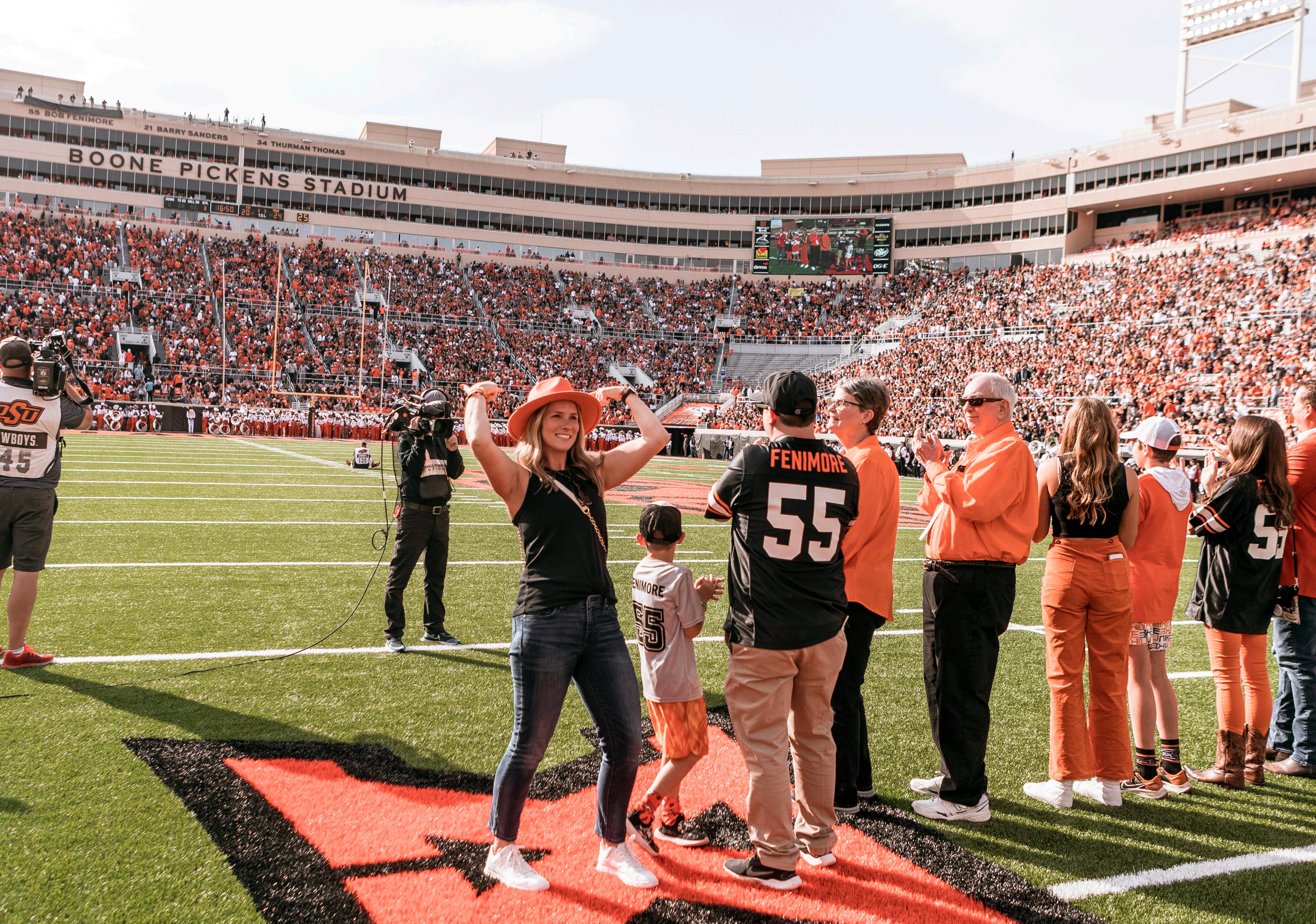
Members of the Fenimore Family watch as No. 55 is added to the Cowboy Football Ring of Honor on Oct. 8. The late Bob Fenimore was a two-time All-America, leading Oklahoma A&M to an undefeated season in 1945. A member of the College Football Hall of Fame, the Woodward, Okla., native was the first overall pick of the 1947 NFL Draft by the Chicago Bears. Fenimore's name joins OSU greats Thurman Thomas (34) and Barry Sanders (21) in this exclusive club at Boone Pickens Stadium.

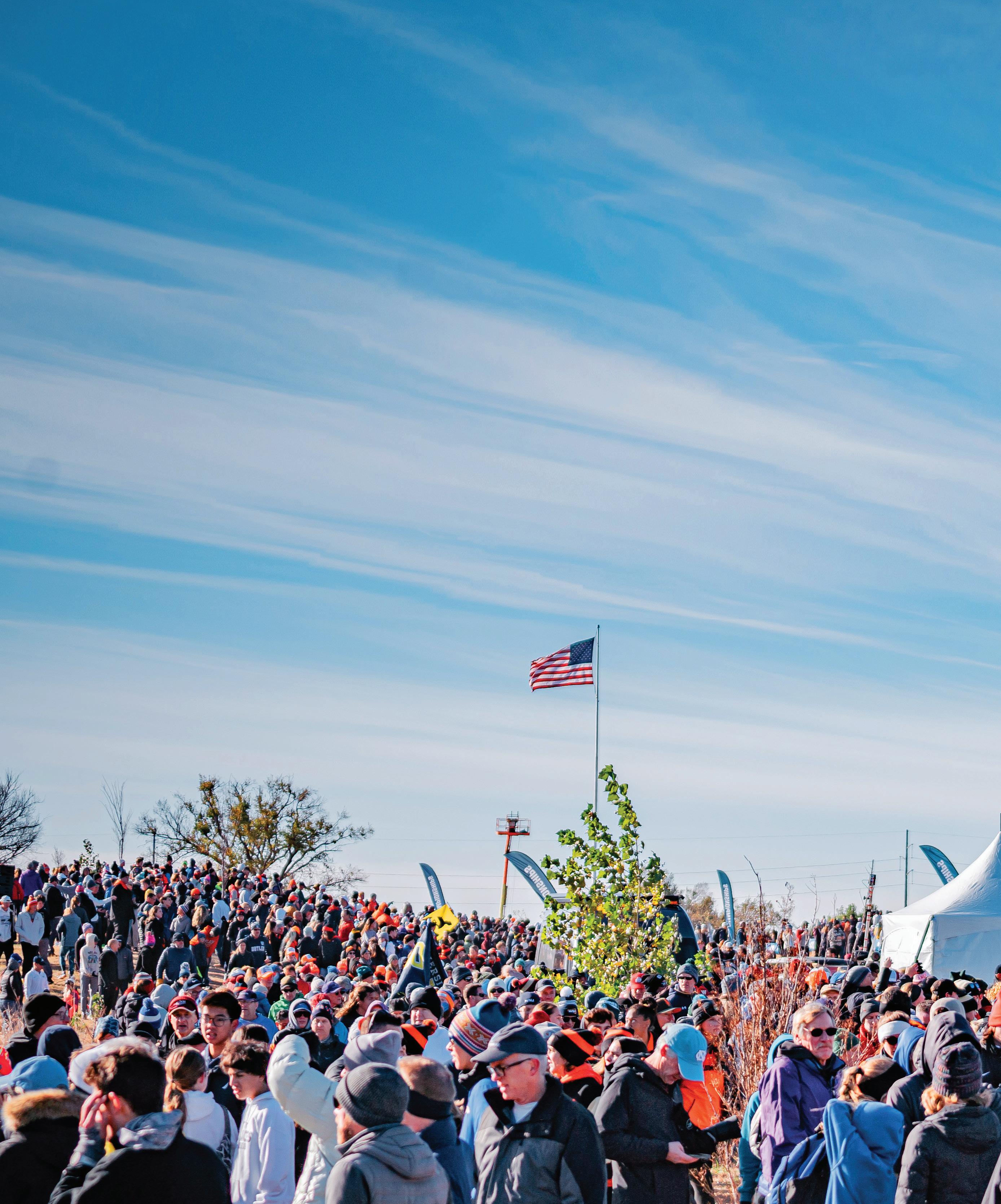
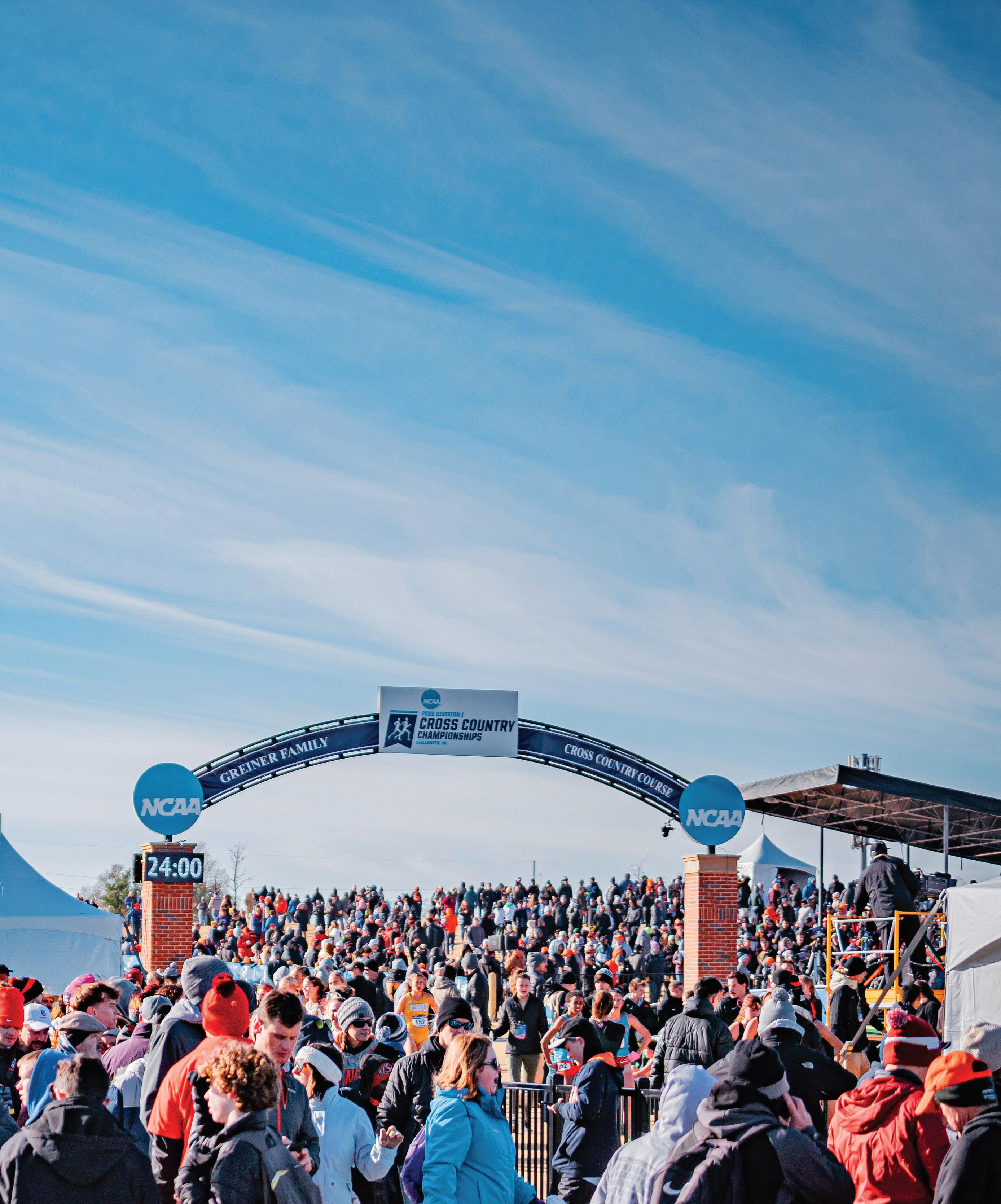
There are some magical destinations associated with NCAA championship competitions.
For college baseball, the promised land is Omaha, Neb. For men’s and women’s basketball, it is the road to the Final Four, and wherever it may lead in any given season … maybe New Orleans, Indianapolis, Phoenix or Dallas.
Softball crowns a new champion in Oklahoma City every season. It’s an annual pilgrimage every team wants to make. And for some NCAA sports, the mythical destination is Stillwater, Okla.
Oklahoma State has thrown itself into the NCAA postseason business in a big way with men’s golf, women’s golf, men’s cross country, women’s cross country, men’s tennis and women’s tennis all with NCAA championship events scheduled in Stillwater or NCAA championship events completed in Stillwater in the recent past. Those championships don’t count the Regionals, Super Regionals or early round competitions OSU Athletics may host in any given year, especially in the sports of tennis, baseball, softball, golf and soccer.
And in March, the hosting role continues in Tulsa when the NCAA Division I Wrestling Championships — hosted by OSU in conjunction with the Tulsa Sport Commission — is contested at the BOK Center.
The wrestling tournament takes place on the heels of the recently completed men’s and women’s cross country national championships, which were held in November at the Greiner Family OSU Cross Country Course. Oklahoma State has now hosted that event twice in three years after having never hosted it in its history.
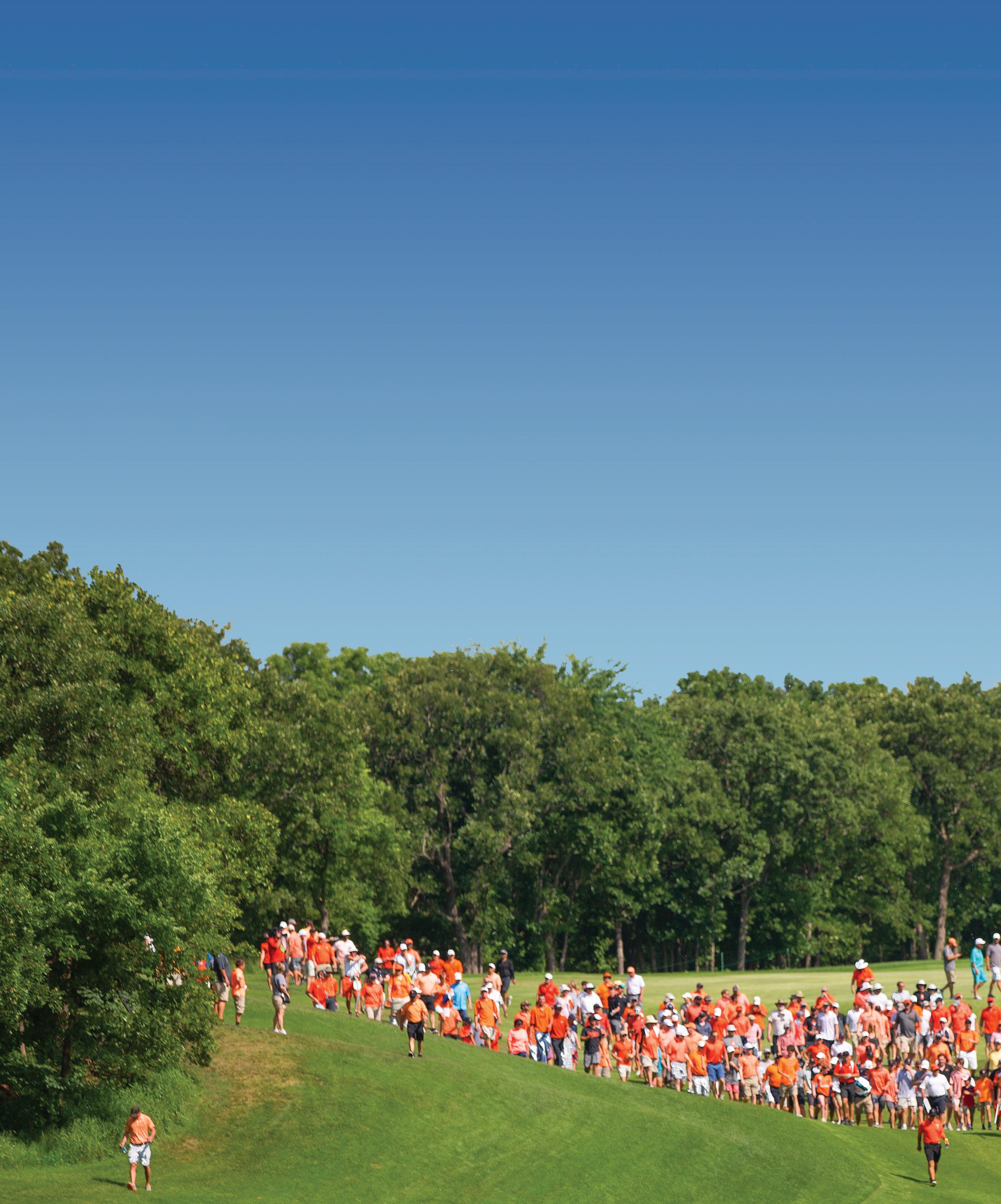
Already on the books for the future is the NCAA Division I Men’s and Women’s Tennis Championships at the Greenwood Tennis Center, scheduled for the spring of 2024.
As folks around the OSU Athletics Center can confirm, hosting an NCAA championship event does not mean providing fresh doughnuts to visitors every day and wishing them good luck. There is no NCAA sta relocating to Stillwater (or Tulsa) to execute the nuts and bolts of championship events. The successes and/or failures of hosting championships is squarely on the host institution. There are documented protocols and guidelines provided by the NCAA and the NCAA championships sta will have some boots on the ground. But those folks rushing around breathlessly all week sporting those blue NCAA polos are Cowboys and Cowgirls or volunteers.
In 2018, Karsten Creek, for the third time in its history, hosted the NCAA Golf Championships. But due to a change at the NCAA level, for the first time it would not be just the men teeing it up in Stillwater. The men’s and women’s tournaments would be held on the same course in consecutive weeks. Also new to the equation was the television element. The Golf Channel was in town to televise both tournaments. Overall, it was a mammoth operation that lasted nearly three weeks when factoring in practice rounds for the teams. More than 200 volunteers were needed from dusk to dark, in the Oklahoma heat, at the height of storm season.
Scott Tucker is a former OSU Athletics sta er who now serves as the university’s director of tax and compliance services. He was the tournament director for the golf championships when the OSU men brought home the national title in 2018, and he ran the tournament in 2011 at Karsten Creek as well.
“The combination of all of the moving parts, and yet still paying attention to the smallest of details, is the challenge,” Tucker said. “When you don’t host an event every year, there is no routine. You have one shot to get it right. In athletics, we are a lot better hosting the second football game than we are hosting the first. With NCAAs, you don’t get a second chance.”
No two championships are the same. Philosophically, each NCAA championship event has the same goals. However, each postseason is overseen by a sport-specific committee. That means points of emphasis for the NCAA golf
committee are not necessarily what’s most important to the tennis committee.
“Taking care of the student-athletes and coaches so they have the best experience possible,” Tony Petro says, is the common link. Petro, the athletic department’s business manager, will serve as the tournament director when wrestling comes to Tulsa in March.
“We want to dedicate every resource possible to provide them with a great experience,” he said. “Wrestling is one of the toughest sports on the planet. Knowing the hard work and dedication that wrestlers put themselves through every day makes you want to provide them with a first-class experience.”
Oklahoma State has hosted two of the most di cult postseason events to manage. The golf and cross country championships cover massive amounts of acreage and draw large crowds to venues without seating. There is always the potential for weather problems, and both events are now televised from locations that are not live-media friendly.
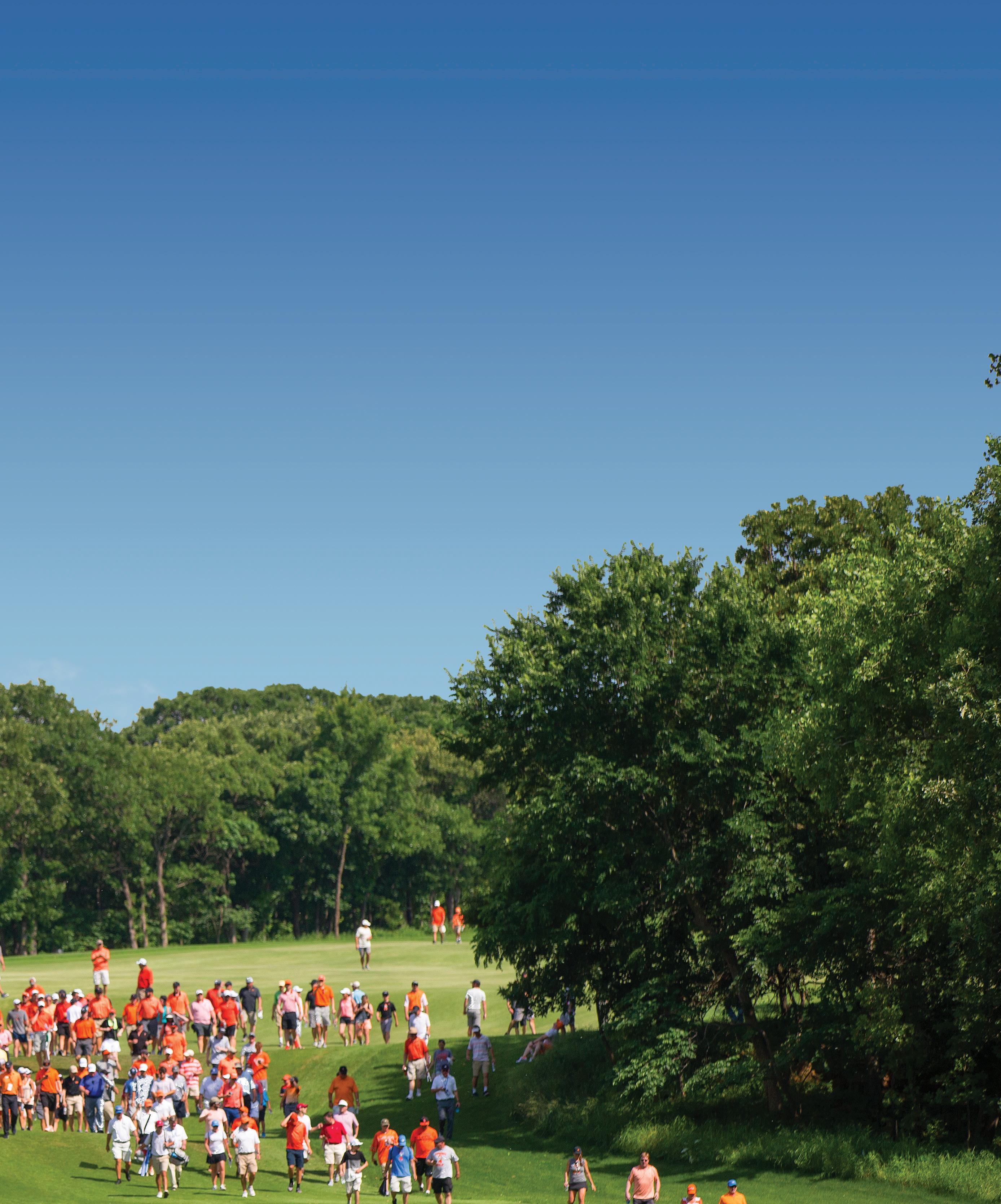
“Securing the facility is certainly an issue,” said Ben Dyson, who is an associate athletic director for compliance but heavily involved in both the golf and cross-country championship e orts. “It takes a small army of volunteers to funnel student-athletes and spectators into areas where they need to be.”
“Building all of the infrastructure is probably the biggest challenge,” said Lisa Fischer, OSU associate athletic director for events. “We take a field or course with nothing regarding technology or fan amenities and build out a national championship event. The logistics of having power in the right spots for TV, timing mats throughout the (cross country) course, media workspace, video boards, music and announcers alone is a feat. Then you add in nearly 100 tents for participants, tournament management, restrooms and concessions. Then you decorate to give it a championship feel. Next, add in spectators and getting them to the venue and into the venue. Then out of the venue.”
Pivot to the challenge that Petro faces with wrestling as Oklahoma State prepares to host an event an hour from campus.
“The physical aspect of not being there to run di erent scenarios with the BOK sta is a challenge,” he said. “They are great to work with, but we can’t just run downstairs and revisit an area that we may want to re-purpose.”
The moral: hosting championships is not one-sizefits-all
Hosting NCAAs starts with the submission of a bid. Each sport has its own calendar, but there is sometimes as much as a three- or even four-year runway after the championship site is awarded until the date of the actual competition. The future host is expected to attend their championship the year prior to hosting. Over the past few years, Oklahoma State sta ers have attended cross country championships at Florida State, tennis championships in Orlando, golf championships in Illinois and wrestling in Detroit.
Planning gets serious the final 12 months with manuals produced for the participants, site visits by the NCAA and television partners and numerous sessions on the nuts and bolts for the events and the gathering of volunteers. And of course, the non-stop facility assessment, earmarking locations for very specific uses.
And sometimes, plans fall apart
OSU was awarded the men’s and women’s tennis championships in 2020, only to have them wiped out by the COVID-19 pandemic. Hosting an event for the first time is the toughest, as a working template for a championship and a venue is constructed from the ground up. Losing the tennis championships, as a first-time host, was a blow. There was no guarantee for a second chance for OSU.
“We were trying to do some things for the event that would take it to another level,” said Chris Young, who is the head coach for OSU’s women’s program but also the school’s director of tennis. “We were going to do some things that had never been done before to engage fans and make the event special for the players.
“We were on the cusp of having that done and had just signed some contracts and done some things with sponsors and fan experience items the week everything was canceled. We lost a lot of work, but I think through that experience we saw what could be done and what’s possible so that gives us some marching orders for moving forward.”
COVID also played havoc with the cross country championships. Because of the pandemic, OSU’s role as cross country host was moved from November of 2020 to March of 2021. But that wasn’t the final twist.
“Due to COVID, the NCAA had decided not to allow spectators at the national championship races in 2020, which were actually held in March of 2021,” said Stacy Stanush, OSU’s assistant athletic director for track operations. “Exactly 16 days before the races, an athletic director at another school made several statements on Twitter about the NCAA failing the sport by not allowing spectators. The NCAA changed course and decided to allow spectators, which led to calls all over the region and surrounding states for bike racks to separate the spectators from the student-athletes. Bike racks were all the rage for the championships.”
“We set up over two miles of barricades,” Fischer said of the 2021 cross country races. “That was over 1,500 pieces of metal barricades to separate the student-athlete areas from the spectators.”
To add to the experience, the decision was made to utilize skydivers who would land on the course just before the start of the first race. Thanks to winds approaching 50 miles per hour, the jumpers left their planes over Guthrie, and some landed among the spectators on the Greiner Family OSU Cross Country Course. Not exactly a bullseye, but very entertaining. “Many of us thought it was a cool entrance,” Stanush said. “The NCAA strongly advised us against a repeat performance in 2022.”
Karsten Creek has been the site of numerous events, including NCAA tournaments, NCAA regionals and American Junior Golf Association tournaments. As a result, there is an experienced pool of workers.
“We coordinated volunteers for 212 positions over 16 days,” said Cristy Morrison, CEO of Visit Stillwater, regarding the 2018 NCAA golf tournaments. She is on speed dial for every OSU sta er who coordinates a postseason event.
“We never have issues with volunteers,” Tucker said. “That always surprises anyone who has hosted tournaments. The hardest challenge for me was always the weather, something we can’t control. With the layout of Karsten Creek, evacuating the course would be di cult. We fine-tuned the process, but it is by far the most stressful part of the event. I have spent hours staring at a radar screen.”
Even for an indoor event, like NCAA wrestling, the Oklahoma weather is always lurking.
“One of the toughest pieces to put together for the wrestling tournament is planning events around the tournament — what to have inside and what to have outside in regard to fan activities,” Petro said.
Planning any activities in March in this state is a gamble. Place an order for snow or an order for 80 degrees, and let it ride. Play the daily double, and you could get both within a couple of hours. Everything is possible, and nothing is guaranteed.
Of course, the wrestling itself will be inside. For the cross-country runners, and the OSU sta , Mother Nature is part of the competition.
“It’s 5 a.m. and pitch-black outside,” said Fischer of the national championship races in March of 2021. “Freezing temperatures. I’m walking the course with a sign that needs to be placed, which is about as tall as I am. With the wind, I can assure you it was not going well. It was at this moment I began to question my career choices.
“But then the sun comes up, it gets slightly warmer and you see the excitement of the runners and the spectators, and the course comes to life. Once the gun goes o the for the second race, you can pause for a second and see what hard work was poured into the championship from everyone involved, and it makes everything worth it. You enjoy that for a few seconds and then it’s back to work … two years of planning for two 20-minute races. But you keep in mind, it’s the same thing for the student-athletes. It all comes down to a snippet of time.”

National championships are not a money maker for the host institutions, at least not at the time. But they are in an investment. They raise the bar for facilities, they raise the profile of the host institution, they draw spectators to campus that might not have ever planned to visit. They put extra spotlights on Oklahoma State and define OSU as a campus that is serious about competing at the highest level.
Hosting national championships can also raise the profile of a program within its own community.
“I think it’s great to have events in town so people can make connections with your student-athletes and see them as human beings and put a name to the face,” said Dave Smith, OSU director of track and cross country.
Smith has led the OSU men to three cross country national championships and converted Oklahoma State into a national brand in the sport. He also coaches the OSU women, who are emerging as a national power.
“Even if it’s a crowd that is not in support of one specific team, or a crowd rooting against you, that noise adds an extra energy to the race and makes it a better situation for the student-athletes,” Smith said.
The Greiner Family OSU Cross Country Course might be the very best facility in the country. It has led to more events being contested in Stillwater than ever before, including the NCAA national championships, and it has re-emphasized OSU as a place serious about running and winning.
“We get that perception that we are a cross country school,” Smith said, “the school that has the facilities, that hosts national championships. When other schools see us that way, there becomes a collective understanding among recruits that this is the place to go (to school).”
Young has seen the same a ect in the world of tennis.
“I think when people are considering our programs, they know it is recognized as one of the elite programs in the country with a facility that has the ability to host these events,” he said.
“With Tulsa being awarded the NCAA championships, it is an exciting time for Tulsa and Oklahoma State,” said OSU head wrestling coach John Smith. “We’ve worked very hard over the last several years to make that happen. I’m thankful to the Big 12 Conference, who was a big part of it. Having the Big 12 Championships in Tulsa over the past six years is a big reason Tulsa received the NCAAs.”
The fact that Oklahoma State in the very recent past or very near future will have played host to the postseason for 10 di erent championships certainly says something.
“It is a testament to our people,” said OSU Athletic Director Chad Weiberg. “First, the people who have made it possible for us to have facilities befitting NCAA Championships, including Mike and Anne Greenwood, the Greiner family, the Solheims and all the donors who make these facilities possible.
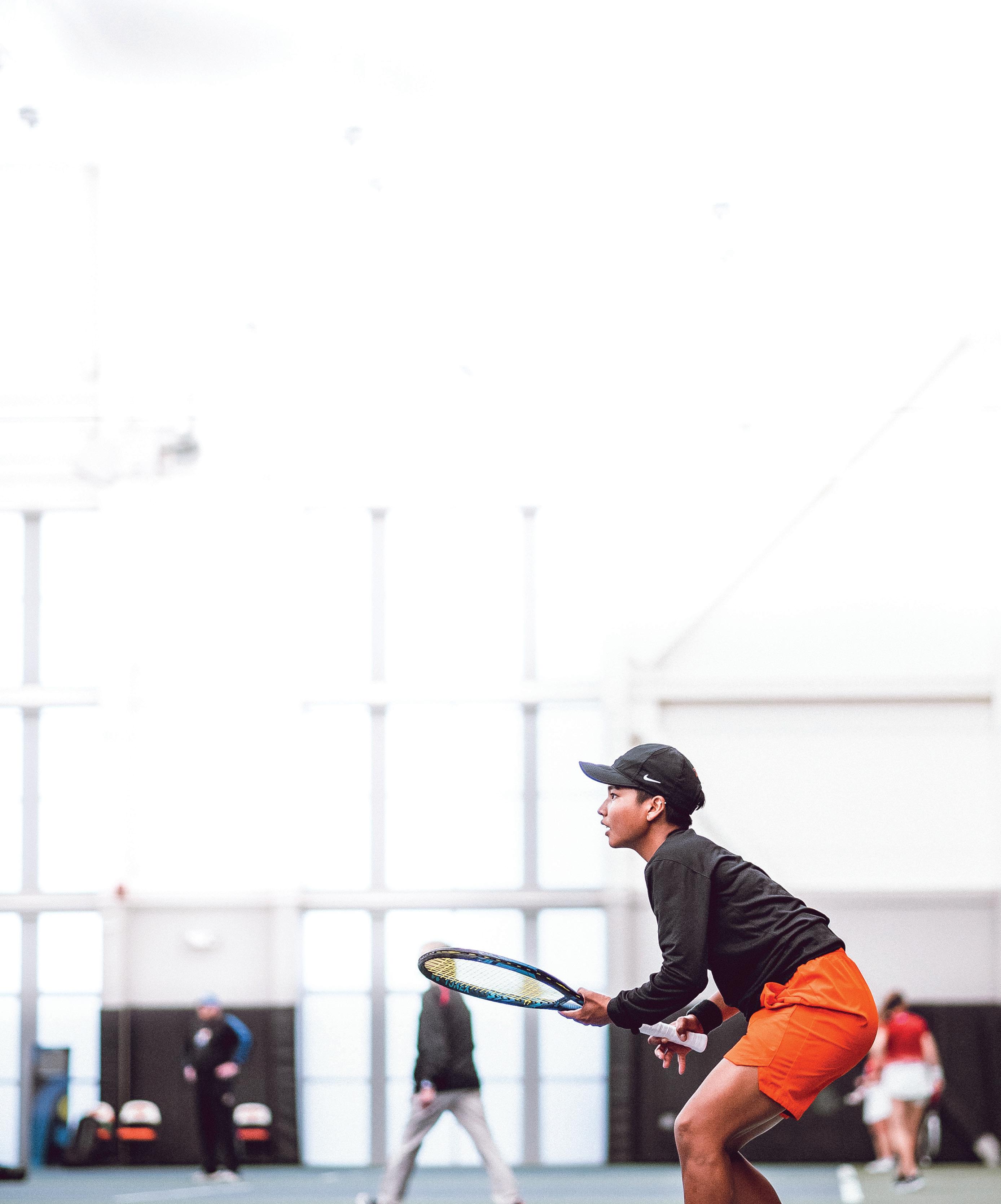
“Second, it’s the people on our sta , our campus and in our community that invest the additional time on top of their regular duties to make sure every student-athlete and coach participating in a championship has a first-class experience.
“And it’s the OSU family. It’s our fans who come out and support the Cowboys and Cowgirls regardless of the sport, but who appreciate the other great competitors representing their school in these championships.”
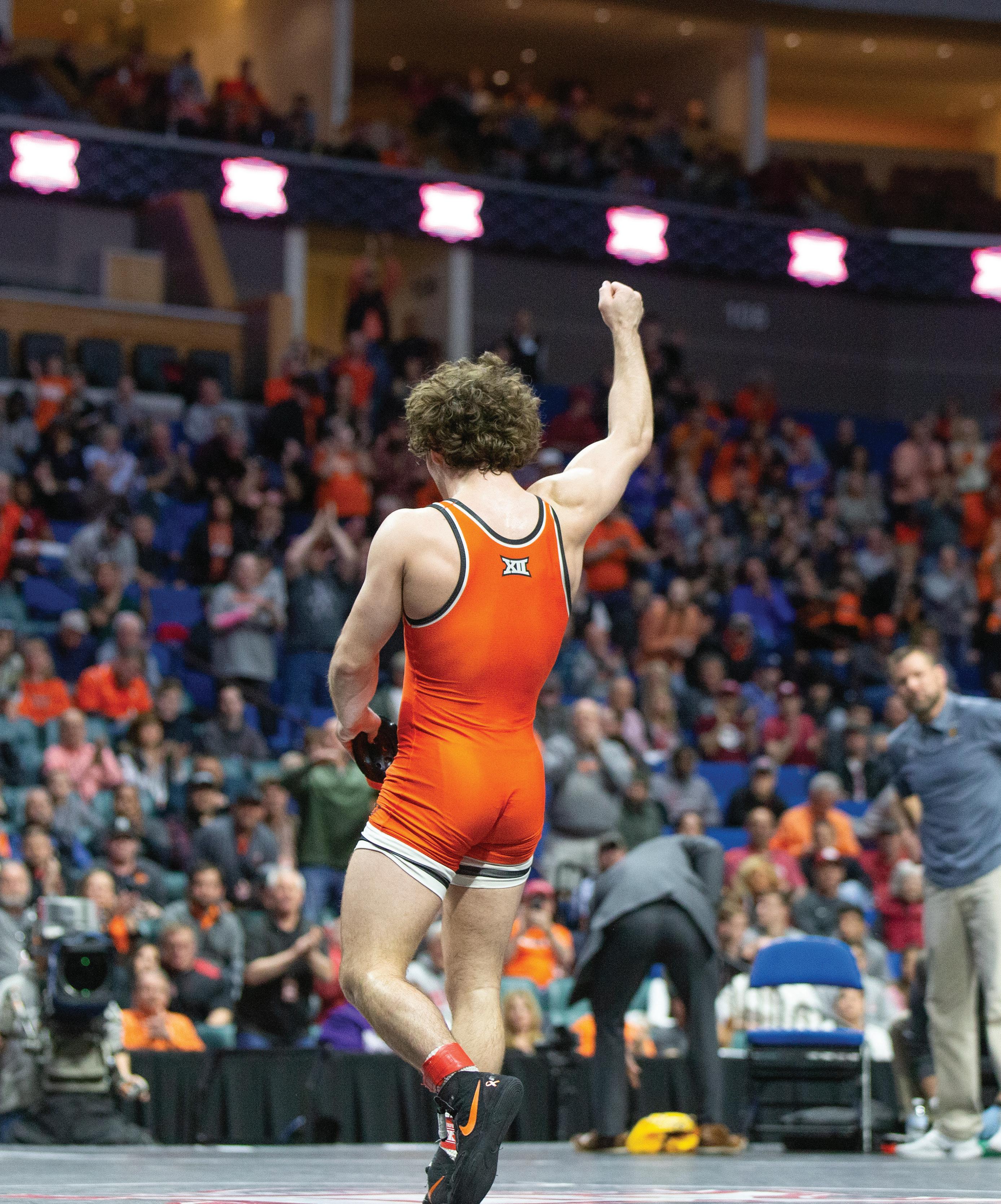

Cowboy Basketball head coach Mike Boyton takes in Walkaround with his son, Ace. The Cowboys tipped-o their 2022-23 season with Homecoming and Hoops later that evening. It is estimated that more than 70,000 alumni, students and fans attended the Friday night tradition as part of America's Greatest Homecoming, presented by the OSU Alumni Association. This year's theme — Hats O to Cowboy Heroes — celebrated individuals who "serve, create, persevere, discover and learn with diligent, passionate hearts."


Since Jacie Hoyt’s hiring as Oklahoma State women’s basketball head coach, we’ve learned a little bit about her.

We’ve learned that she has worked her way up the coaching ranks. We’ve learned she is the daughter of a high school coaching legend. We’ve learned she is a high-energy coach.
But people who know her path to Stillwater know that her story isn’t as clean and simple as being the coach’s kid and footsteps followed.
Hers is not a story of style without substance.
The perspectives shared by the people who know her best tell a much richer story.
Jane Albright is well known in women’s basketball circles. She coached 40 years in the high school and collegiate ranks and was mentored by a trio of legends in Pat Summitt, Kay Yow and John Wooden
She was a graduate assistant under Summitt at Tennessee before moving on to stops as head coach at Northern Illinois, Wisconsin, Wichita State and Nevada, retiring in 2017.
While the head coach at Wichita State, Albright recruited high school prospect Hoyt, unsuccessfully. Hoyt was more interested in higher profile programs that were showing interest.
“I couldn’t even get Jacie to answer my calls,” Albright said. “She had everyone after her, and Wichita State was not high on her list.”
Hoyt signed a national letter of intent with Oklahoma State. Following a coaching change at OSU after she signed, but prior to her arrival, the new sta had a di erent philosophy and Hoyt had to find a new landing spot. The timing limited her options, and she ended up at Colby Community College, where she su ered a serious knee injury that kept her on the sidelines.
While that sequence of events was devastating for Hoyt, it created an opening for Albright to land her prized recruit.
“I knew how good Jacie was, and I also knew how successful her mother was as a coach, but I didn’t truly know either of them,” Albright said. “We didn’t really connect in recruiting because I couldn’t get through to her, but after the injury in junior college I stayed with her, and things worked out how they were supposed to work out.”
What neither Hoyt nor Albright knew at the time was that Albright would become one of the most influential figures in Hoyt’s life.
“Jacie was a star in high school, but I didn’t really get that version of her because after her injuries and the disappointment, she was really in a soul-searching time of her life,” Albright said. “She was injured most of her time with us, but when she was healthy, she was so fierce and would kill to win a drill in practice.”
Hoyt’s ferocity made an impression on Albright, but there was more.
“I wore a ‘What Would Jesus Do’ bracelet, and Jacie came up to me one day, pointed to my bracelet and told me that is what she really wanted,” Albright said.
“We use the term ‘Kingdom Coaching,’ which means that coaches have the ability to not only help players with basketball, but they can also use the game as a platform to invest in their players as people and maybe even help them through faith,” Albright said. “Kingdom Coaching is how I got to really understand how exceptional Jacie is.”
Albright was let go at Wichita State during Hoyt’s time as a player, but when Albright landed at Nevada, she kept tabs on Hoyt from a distance and then hired her as a full-time assistant coach.
“Jacie’s injuries and the struggles she faced made her stronger,” Albright said. “Combine that with her natural competitiveness and the character that she had, and I knew that she had a chance to be an even better coach than she was a player.”
At Nevada, Hoyt continued to develop in the Kingdom Coaching atmosphere championed by Albright.
“You always want hard workers on your sta , and Jacie was a hard worker with character who complemented my vision,” Albright said. “I knew she wouldn’t be at Nevada very long because she had bigger goals and vision. Jacie is exceptional and was always going to have greater opportunities.”
Still, the impact Albright had on Hoyt was immense.
“Jane Albright taught me how to use basketball as a platform to impact lives,” Hoyt said. “She helped me understand that you can, at the same time, coach basketball and help people grow as believers. There’s this narrative that it’s win at all costs, but you can be both.”
After learning from Summitt, Yow and Wooden in addition to 40 years of her own experiences, Albright knows what she’s talking about.
“Jacie wants to win a national championship and has the energy, the basketball knowledge and the built-in ferocity and work ethic to actually do it. Maybe the piece I was able to help her with was showing her that you can be a person of faith who loves and serves others while still being a fierce competitor,” Albright said.


It is a sign of true belief when an athletic director hires a head coach, because get enough coaching hires wrong, and it could be the AD whose reputation comes into question in the pressure-packed world of NCAA Division I sports.
Better get it right.
When then-Kansas City athletic director Carla Wilson interviewed Jacie Hoyt for the head coaching job in 2017, Hoyt had no direct ties to the school, wasn’t yet 30 years old and had never called a timeout in her life.
Still, Wilson put her own name on the line by hiring the fresh-faced assistant from Kansas State.
On the day of the hiring announcement, Wilson cited Hoyt’s basketball pedigree, knowledge, recruiting experience and desire to develop young women among the reasons for selecting Hoyt to lead the Roos program.
Not included were comments about Hoyt’s leadership, perhaps because that was the great unknown — Hoyt had never been a head coach.
For Wilson, it required a leap of faith — she was a true believer.

“When I first looked at her, I knew about her mom and the basketball background she came from. I didn’t know her, though,” Wilson said. “In the initial interview, I could tell she was passionate about basketball, but I wanted to know about her as a person. At the very end of the interview, I asked her if there was anything else I should know, and she made a point of telling me that her faith was important to her. After she said that, she was concerned that would be a deal-breaker for me.”
Hardly. Wilson scheduled Hoyt for an in-person interview.
“When we met in person, it became clear that she was the one,” Wilson said. “I loved her integrity. I felt it. There was a connection between us, and I knew she was the perfect fit.”
The job was Hoyt’s, and her career as a head coach had o cially launched.
“Once I hired her, she was more than I could expect,” Wilson said. “She went above and beyond in recruiting. She went above and beyond in making sure the student-athletes knew how to compose themselves, both on and o the court. Community service was big for her. She took time after every game with the fans to tell them how important they were.
“She blew it out of the water,” Wilson said. “She revived our program. She turned it around and got people to believe in her. She asked me to trust her, and then she delivered on everything.”
It wasn’t the basketball that Wilson loved most about Hoyt. It was the impact she was having on the people around her.
“It was so important to me to have a good person, one who I could lay my head down at night and know that she was treating people the right way,” Wilson said. “I knew I was taking a chance with a young, first-time head coach but I would do it a million times over. She is a wonderful person and does it the right way.”
Hoyt rewarded Wilson’s belief with a five-year run that was transformational for the program. She compiled an 81-65 overall record (.555 winning percentage) and a 48-31 mark in conference play (.608). For perspective, the six Kansas City coaches before her combined to go 242-437 overall (.356) and 144-215 in conference play (.401). In 2021-22, she coached the Roos to their first postseason appearance in a decade.
“Being attached to giving Jacie Hoyt her start as a head coach will forever be the greatest accomplishment and honor of my athletics career,” Wilson said.
As Hoyt was establishing herself as a successful head coach at Kansas City, a former co-worker of hers from Kansas State was also growing into prominence, but as an athletics administrator.
His name? Chad Weiberg
“I don’t remember specific interactions that I had with her at K-State, but I remember that every interaction I had
“She has a great vision , and she believes in herself and what she can accomplish and what her team can do.”
with her, I left feeling very positive,” Weiberg said. “She was at the start of her coaching career, but she had a lot of potential, and it was clear that she would be successful. When she got her first head coaching opportunity, I followed her, and it wasn’t surprising at all that she had success at UMKC.”
Less than one year after ascending into the athletic director role at Oklahoma State, Weiberg was in search of a head women’s basketball coach. He knew in general what he wanted, and based on what he knew about Hoyt, identified her as a potential match.


“First and foremost, you want to put someone in front of your student-athletes who you believe is going to be the best teacher, best role model, best motivator and who will provide the best experience possible for the student-athletes now and into the future,” Weiberg said. “That was a big part of the profile in what we were looking for in our next head coach. Also, being competitive and winning — and winning championships — because that is what student-athletes want out of their experience at OSU. I had no reservations about Jacie being all those things.
“The ability to build a program, connect with our fans and do it in a way that is sustainable. That’s what we want to do here. I believe with Jacie, we can achieve the same level of
success with women’s basketball that we have in so many of our other sports.”
So Weiberg had his vision for what Cowgirl Basketball could be and his instincts led him to Hoyt, but he graduated into true believer status after a phone call with Kansas City athletic director Brandon Martin
“I spoke to him and his reaction was, ‘I’ve been expecting this call.’ Not necessarily from us, but he knew the day was coming that someone else would give her the opportunity to take this next step,” Weiberg said.
Hoyt was ready for something greater, and Weiberg and Martin both knew it.
“The energy, the talent — all those things I remembered about her — that’s exactly what we have seen from her here at Oklahoma State,” Weiberg said. “She has a great vision, and she believes in herself and what she can accomplish and what her team can do.”
Hoyt has instilled that same belief in Weiberg, and as a result, he is more than an athletic director.
He is a true believer.
Naomie Alnatas is a long way from her home in French Guiana.
She showed an early aptitude for basketball and recognized that if she stayed home, the options to reach her highest potential in the game were going to be limited. At age 14, she was serious enough about pursuing her dream that she left her family and moved to France.
“I got on the plane by myself and had a picture of the coach who was going to pick me up at the airport, but I didn’t know,” Alnatas said. “All I knew was that I needed to make that move if I was going to become a professional basketball player.”
After playing club ball in France, she found her way to the United States and Iowa Western Community College, where she earned honorable mention NJCAA All-America honors and a scholarship o er from Hoyt at Kansas City.
Alnatas was about five years removed from living with her family, and what she didn’t know at the time was that she was getting more than a coach in Hoyt, she was getting someone who would be like a second mother.
“Not just a mom,” Alnatas said of Hoyt. “She has taught me a lot. I was not really a leader when I got to Kansas City, but she really developed that in me. She is a woman of faith, and that is really important to me. She’s a truth-teller. She’s only one individual, but she plays di erent roles in my life other than just being a coach.
“She is feisty, she is fierce, she is intense and unapologetic, and she just shows you that you can be aggressive as a woman, and I just love that about her. It’s cool to play for somebody who is like a lion. You feel her passion. She’ll fight for you. It makes you want to give it back to her.”
Alnatas did just that during her time in Kansas City, where last season she ranked second in the Summit League with 18.6 points per game and led the league with 5.3 assists per contest.
So when Hoyt took the job at Oklahoma State, Alnatas faced a risky decision — did she want to give up being the top returning player in the league to follow her coach to OSU and the Big 12, where nothing would be promised and attaining that same kind of status would be much more di cult?
She chose Jacie Hoyt.
Again.
“For me, it’s like a family member,” Alnatas said. “It’s more than just a coach-player relationship. It’s more life and family oriented. We are a lot alike — feisty and fierce. We are women in Christ, and I feel it. Seeing that in her is great because we match so well.”
It really has come full circle for Alnatas, who once got on a plane with only a photo of a coach who she didn’t know to now having a coach in Jacie Hoyt that she refers to as a second mother. Alnatas’ perspective on Hoyt is unique, and she knows exactly how it will translate to her role with the Cowgirls.
“There is a total new culture, a 360 (degree) culture that she is trying to implement here, and it helps to have a player who understands it,” Alnatas said. “That’s part of why she brought me here, to help everybody else understand the culture, the expectations and how we do things.”
It doesn’t take much research to figure out what inspires Jacie Hoyt.
Heck, she states it as plain as day in her Twitter bio: 3 things that make my world go round ... Jesus. Family. Hoops. Blame it on her roots.
The second of four sisters, Jacie is the daughter of Scott and Shelly Hoyt, who made faith a large part of their upbringing.
But they did more than teach it, they modeled it by leading others through service.
During a college career that was largely derailed by injuries, Jacie’s faith was tested and refined. Rather than succumb to the first ACL tear, or the second, or the third, or the fourth, she took a much wider view of the adversity and used it to serve others.
“Those injuries really shaped me, Hoyt said. “I got to see the game from a di erent lens. I got a taste of being the star player while I was in high school to being on the sidelines. That expedited my coaching career and made me a better coach. It gave me the ability to connect with my players and empathize with them. I want to use my platform to invest in them and let them know I care as much about them as people and as players.”
Look no further than Naomie Alnatas for verification of that claim.
When Hoyt was recruiting Alnatas from Iowa Western, she had a fight on her hands because Alnatas also held o ers from Big 12 schools that were more prominent than Kansas City. During the recruiting process, Alnatas su ered a significant knee injury and the Big 12 schools rescinded their o ers.
But Hoyt didn’t.
taught at a very young age — it’s what we do and it’s part of what makes Jacie great because she strives to be the best,” Terran said.
Shelly has more than 550 career coaching victories to rank second all-time among female head coaches in Kansas high school basketball history. The Hoyt girls have been around the game their entire lives.
Shelly said Jacie got her start in the game as a preschooler. As Shelly was coaching at practice, young Jacie

would be o to the side mimicking the drills run by Shelly’s players. It was more than that, though. It was Jacie dribbling around the house. It was Jacie going to the gym to work out on
“Tabitha played the flute in school, and to get an A in band, she had to practice 30 minutes on her own every night,” Shelly said. “Jacie saw this is what it took for Tabitha to get good at the flute, so she would practice ball-handling for 30 minutes every night in our basement so she could be good at
It was happening — Jacie was falling in love with the . Shelly accelerated her progress by delivering a consistent message to Jacie — if you really want to do this, then you need to do it the right way. With that as the foundation, Jacie’s skills and confidence grew and by the time she reached high school, she was a star.
There was a price to pay, though. It’s the same price that many successful children of coaches have to pay — resentment from teammates and scorn from parents and
Jacie became a target, and on top of that, she watched as her mother absorbed unfair criticism and hate.
“It looks so pretty and perfect all the time (with Jacie), but she has overcome a lot,” Terran said. “She’s had to fight a lot of battles but that’s who she is — she is an overcomer.”
Shelly had her own thoughts.
“She is so poised and maybe she got that more from Scott than from me, because I probably would have gotten some technical fouls or even worse as a player if I were in the situations Jacie was in,” Shelly said.
Shelly said Jacie was initially reluctant to get into coaching because Jacie saw everything that Shelly went through in dealing with angry parents and more. In the end, though, Jacie couldn’t walk away from the game she was so
Along the way, Jacie was ignited by an additional purpose in coaching — the concept that she had a platform to empower
“What makes me most proud of Jacie is that she does things for the right reasons,” Shelly said. “How she treats her players and how she loves them — I truly wish they knew how much she thinks about them all the time. So many of her everyday decisions are based on helping them.”
There is a lot of Shelly in Jacie.
“We’re both two-feet-in with everything we do,” Jacie said. “If you’re going to do it, you need to do it to the absolute best of your ability. She taught us to be bold and courageous. Her boldness stuck with me. She taught me if you work hard and do things with integrity and do things the right way and don’t back down, good things will come.”

You can’t make up some of the stu that happens on social media. It’s wild.
Often times, it takes scrolling through piles of digital garbage to find something legitimate.
So what in the world was Jacie Hoyt supposed to do that one day in 2016 when the Facebook message came to her out of the blue from someone she didn’t know?
Hey Jacie! I don’t think we’ve o cially met but I wanted to reach out and introduce myself. We have a lot of friends in common and I actually asked Chad Weiberg the other night about you. Being from Kansas, both Wichita State grads and working in college athletics makes it a small world. Maybe we can plan to meet in the near future if that’s ok. Anyway, just thought I’d reach out and break the ice (kind of) and hope you’re having a great day.
Guns up! ��
Daniel
She never responded.
As it turns out, Daniel was legit.
At the time, Hoyt was an assistant coach at Kansas State and Daniel Heflin was in development at Texas Tech. Heflin became aware of Hoyt through Big 12 circles and found a common acquaintance in then-Texas Tech deputy athletic director Chad Weiberg.
A little more than nine months after Heflin clicked send on his original message, Hoyt was hired as head coach at Kansas City. Still working at Texas Tech, Heflin was on a scheduled visit to Kansas City and decided to give it another shot — this time, asking a mutual connection to introduce him to Hoyt in person.
It happened, and the two fell for each other.
One problem though — Hoyt was living in Kansas City and Heflin in Lubbock. As a first-year head coach without much free time or bandwidth to invest in a serious relationship, it was never going to be easy for Hoyt. Still, the two remained in contact, even as the basketball season was bearing down.
Finally, Hoyt suggested a break. They wouldn’t speak for a week and after that, they’d figure out if the relationship was worth the long-distance hassle.
Three days into the break, it was Heflin’s turn to receive an out-of-the-blue proposal. Completely unprompted, Kansas called and o ered him a job in its athletic department.
Stunned, he immediately dialed Hoyt, who stayed true to the break and didn’t take the call.
After a few days, the break came and went. Heflin told Hoyt about the o er, he took the job in Lawrence, and not long after, the couple were married.
Fast forward to today, Hoyt is still coaching ball and Heflin is still in development, now at Oklahoma State.
“I can’t imagine being married to a more supportive husband,” Hoyt said. “He’s by my side in everything I do. He’s encouraged me to chase my dreams and is a crucial piece to me and the success I’ve had.”
Heflin wasn’t drawn to Hoyt because she was a basketball coach. He said he was drawn to her for the person that she is. Now that the two are married, he pulls inspiration from her father.
“I have seen the impact that Scott Hoyt has on Shelly, and I want to be that for Jacie,” Heflin said. “He is so supportive in everything he does. He understands the coaching side of things but he is also the kind of person that you can go to for advice in life. I look up to him and try my best to mirror that for Jacie.”
It all ties together with Jacie Hoyt. There are di erent perspectives, but they all point to one messy, imperfect, non-traditional story that she tells in an 11-word Twitter bio.
3 things that make my world go round ... Jesus. Family. Hoops.
31 Kent Dunbar 32 Bob & Addilee Coleman 33 Gary & Claudia Humphreys 34 Watson Family Foundation 35 OSU President's O ce 36 Greg & Rhonda Casillas 37 Johnson Auto Family, LLC 38 Mike & Glynda Pollard 39 David & Tracy Kyle 40 OG&E 41 Russ Harrison 42 Anonymous #1 43 Waits Family 44 Mark & Beth Brewer 45 Vickie & Tucker Link Foundation 46 Les & Cindy Dunavant 47 Richard Bogert 48 Bryant & Carla Co man 49 Patrick & Patricia Cobb 50 Gary & Jerri Sparks 51 Joe & Vickie Hall 52 Johnston Enterprises 53 OSU Business O ce 54 Calvin & Linda Anthony 55 Mike Bode & Preston Carrier 56 Anonymous #4 57 RCB Bank 58 Barry & Roxanne Pollard 59 Brad & Margie Schultz AS OF NOVEMBER 1, 2022
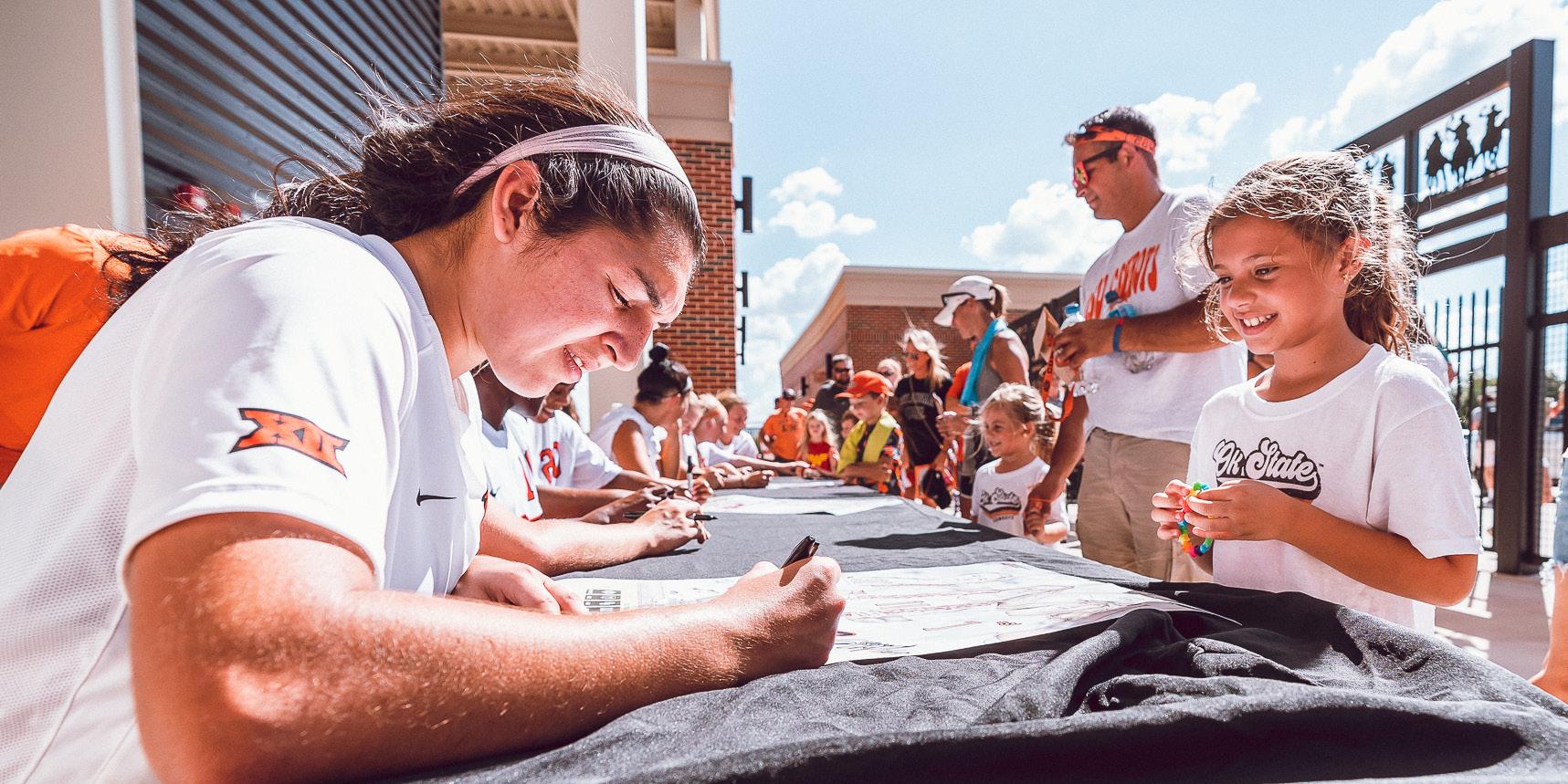
1 Boone Pickens – 6,116,026
60 KNABCO, Inc. 61 Lambert Construction 62 Joullian & Co. 63 Darton & Jamie Zink 64 OSU Center for Health Sciences 65 Mark & Lisa Snell 66 Ike & Mary Beth Glass 67 Baab Legacy, LLC 68 Phil & Ruth Terry 69 Steve & Diane Tuttle 70 Bank of Oklahoma 71 Z Equipment 72 Wiese Family 73 Flintco, Inc. 74 Jana Drummond 75 Anonymous #2 76 Bill & Marsha Barnes 77 Fechner Pump & Supply 78 E. Turner & Cynthia Davis 79 Steve & Jennifer Grigsby 80 Randall & Carol White 81 Matt Holliday 82 Ed & Kathy Raschen 83 Chip & Cindy Beaver 84 Bancfirst 85 David & Julie Ronck 86 Steve Tatum 87 Jameson Family, LLC 88 Atlas Asphalt Products
89 K D Greiner 90 Ed Evans 91 Jay & Connie Wiese 92 American Fidelity 93 Ron & Jan King 94 Anonymous #3 95 Lon Kile 96 Brent & Mary Jane Wooten 97 Bob Norris 98 OSU Alumni Association 99 Sparks Financial 100 Henry Wells 101 Midfirst Bank 102 Bank of America 103 Pam Russell 104 Barber-Dyson Ford Lincoln Mercury 105 Paycom 106 David LeNorman 107 Richard & Joan Welborn 108 Patterson UTI 109 Lindel & Donielle Larison
Penny Cupp 111 Vicki & Jim Click
Larry Albin
David Bradshaw
Joseph Eastin
Southwest Filter Co. 116 Chris & Julie Bridges
Larry & Kayleen Ferguson
John & Kaye Hull
Steve & Vicki Farris
Emricks Van & Storage
John Groendyke
Jerry Marshall
Gri & Mindi Jones
Harvey & Donna Yost
Bruce & Sheryl Benbrook
Austin & Betsy Kenyon
Jay & Fayenelle Helm
Philip B. Smith
Bob & Mary Haiges
Randy & Pati Thurman
JS Charter Investments, LLC
Douglas & Nickie Burns
Naugle
Blueknight Energy Partners, LP
Bill & Karen Anderson
AEI Corporation
Vionette & John Dunn
Ronald McAfee
Wiley McCollum
Sandra Lee
Brad & Leah Gungoll
Bryan Close
Gary & Mary Ellen Bridwell
Harrison Investments
Drummond Investments
Terry & Martha Barker
Robert & Sharon Keating
Tommy Weder
Cory & Lynn Bowker
The Priority Point System provides a fair, consistent and transparent method of providing benefits to donors in exchange for their financial investments in OSU athletics.
All current and lifetime contributions (cash or stock) are worth three points per $100 donation. Planned (deferred) gifts in the new Leave a Legacy Endowment Campaign will receive one point per $100.
Donors will earn one point each year for purchasing season tickets (one point per sport annually), as well as one point for each year of POSSE donations.
Connection with the University Donors (or their spouses) who are OSU Alumni receive a one-time 10 point bonus, as do OSU faculty/sta and letterwinners.
Points never diminish and will carry over to subsequent years. Donors retain all previously earned Priority Points in their giving history. For questions about the POSSE Priority Point System, email posse@ okstate.edu or call us at 405-744-7301.

Whether you give to scholarships, research, a new building project, or help create something entirely new, your philanthropy is a game changer. No matter what you’re passionate about at Oklahoma State University, there’s a way you can help make it happen.
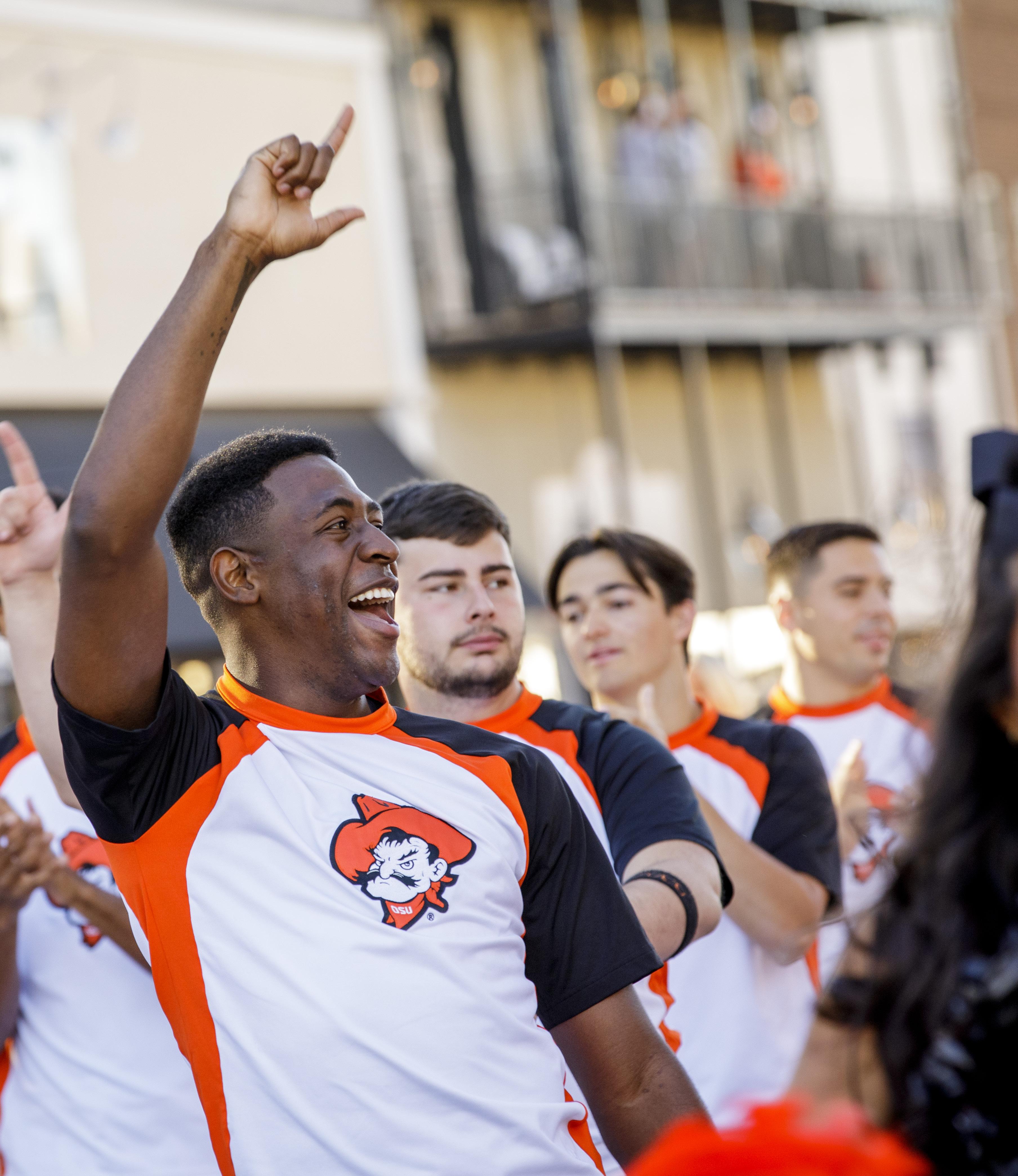
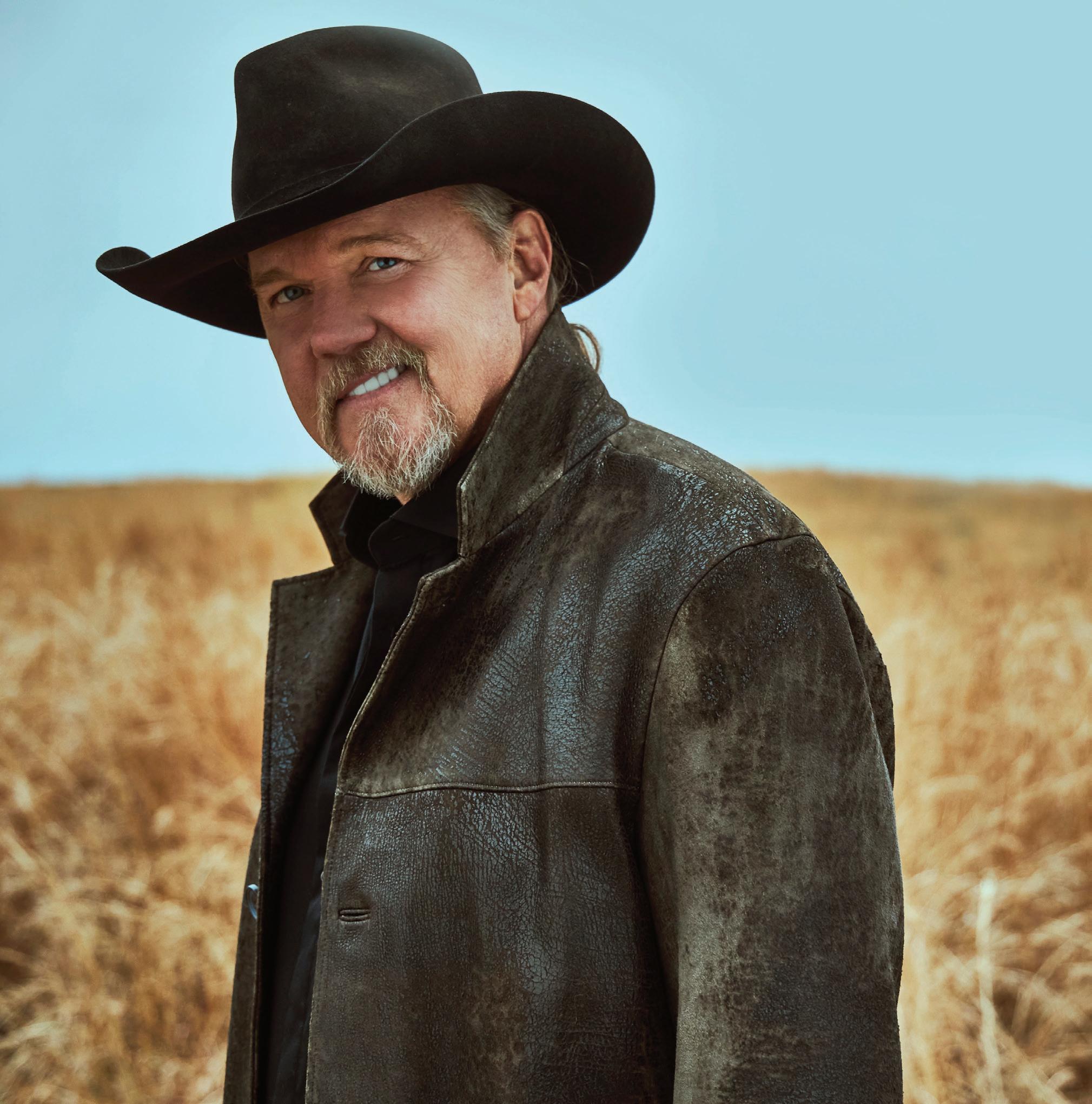
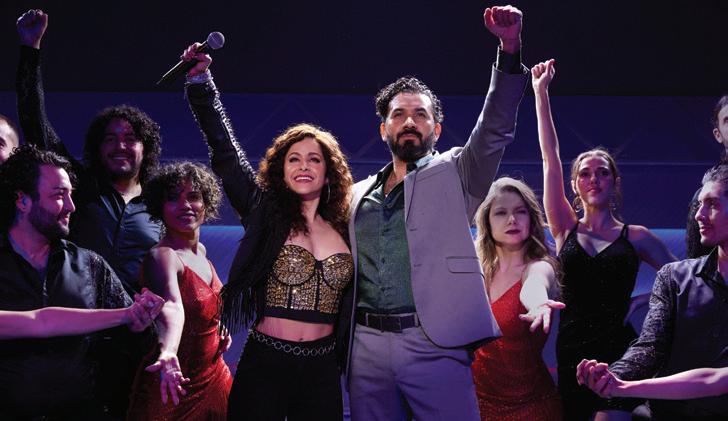

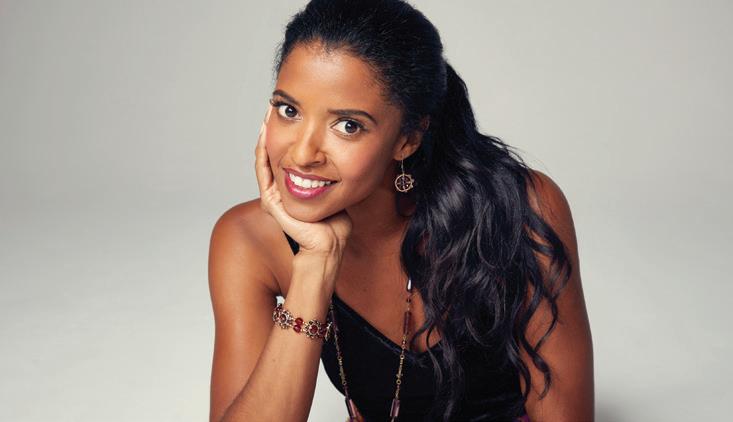

 Story by Clay Billman
Story by Clay Billman

When Austin Pollard was in first grade at Waukomis Elementary School, his teacher asked the students what their parents did for a living. The middle child of Barry Pollard stood up, paused for a moment and addressed the class.
“Well, my dad drives a tractor, and he takes care of the cows … and sometimes he operates on people’s brains.”
He wasn’t wrong. The recently retired neurosurgeon from northwest Oklahoma has done all that and more.
Dr. Pollard, a 1973 graduate of Oklahoma State University, wears many hats: farmer, rancher, business owner, board member, physician, philanthropist and Cowboy fan (not to mention husband, father and grandfather).


Although he recently retired from his pioneering practice of more than 40 years, Barry is busier than ever. A row of wooden rocking chairs on the Pollard’s front porch remains empty most of the time.
“I've always been goal oriented,” he says. “My engine gets going, and I just have to feed it by getting more stu done. I feel like I always have to be moving … ‘Gotta get it done! Gotta get it done!’ I probably have too much to do, but I have good help. I've surrounded myself with good people.”
Roxanne is a retired neurosurgical nurse who worked alongside her husband in the operating room for a number of years. She stays busy serving local non-profits, volunteering, spending time with 11 grandchildren and pitching in at Pollard Farms.
“I worked as a nurse o and on,” she says, “and then I also did some adjunct teaching at Autry Technology Center program here. In these last 10 years or more, I've just done lots of volunteer work in our community. I’m on the regional Food Bank Board and our Autry Tech board and just things that I'm interested in.”
“She’s been the chairman of everything in Garfield County,” Barry adds.

Roxanne was also appointed by the governor to serve on the Oklahoma State Board of Examiners of Psychologists.
The couple lives outside Waukomis, a rural community with a population of 1,200 five miles due south of Enid. There they raised five children, along with a niece.
The oldest of six siblings, Barry grew up in Hennessey, Okla., about 45 miles west of Stillwater on Highway 51.
“My dad (Russell) was an ag teacher, and my mother (Patsy) was an elementary school teacher.”

Barry was destined for OSU since day one.
“Gosh, I can remember back in the day, whenever I helped my dad work cattle and farm, listening to Walt Garrison run through the line… my OSU history goes back even before then. My parents were graduates of Oklahoma State, so as I grew up, I naturally felt like this is where I wanted to go to college. All of my siblings are OSU graduates, as well. I think my mother has had close to 30 children and grandchildren graduate from Oklahoma State University.”
Barry joined FarmHouse fraternity and quickly became immersed in the college experience.
“That was a great group of guys and great friendships that have lasted forever,” he recalls. “We went to all the games. I remember the Floyd Gass days, and we had the ‘Gass Caps’ — little orange caps we all wore. Some of us would ride in a fire engine into the stadium before the game, right onto the field, and we’d jump o the fire wagon and run up and get our seats. It was a lot of fun.
“When I lived in FarmHouse across from Lewis Field, that was when they were digging out the stadium floor and taking the track out. There were carryalls running all the time, hauling dirt out to lower the playing surface 10 feet or so.”

Raised on a farm, Barry was initially drawn to a career in veterinary medicine, but the biochemistry undergrad found a di erent calling.

“Over the course of my education here, I decided I would prefer to go to medical school.”


Barry was accepted and attended the University of Oklahoma College of Medicine.

“I decided to go into neurosurgery in my fourth year of medical school. I struggled between wanting to do pediatrics initially, but I changed my mind after spending a couple of weeks with a pediatrician. I thought about orthopedics, which was a strong interest of mine, but neurosurgery won out. My neuroanatomy instructor was named the outstanding teacher at the OU Medical School many times, and he and I became great friends, so I really studied the neuroanatomy part.
“Then I started attending some neurosurgery conferences so I could learn a little bit more about what the field encompassed and what it was like. It was a field that intrigued me. It was considered the hardest program with the most strenuous training and commitment to time and work. A lot of the other medical students were frightened of neurosurgery, just the thought of it. But as I got to meet some of the neurosurgeons, spent some time with them, it became obvious to me that it was a real challenge and something I thought I'd really enjoy. I did a five-year residency in neurosurgery and finished that in 1982.”
As a board-certified neurosurgeon, Barry had his pick of hospitals.
“There were three di erent neurosurgery groups in Oklahoma City, and I was asked to join all three. But quite honestly, I did not prefer to live in a large city. Agriculture is my roots, and smaller communities are my roots. Enid was a


growing community at the time with a drawing area for patient care of about 200,000 people. There had never been a neurosurgeon in Enid. A ratio of one neurosurgeon to 100,000 people is considered plenty of work, but I'd be serving 200,000 people if I went there. So, I knew there'd be more than enough work to do, and in fact, I knew it would probably be very strenuous.”
He was right. From intracranial surgery for brain tumors or trauma to neck and spinal fusion to carotid endarterectomy to lessen the risk of stroke, Barry had no shortage of patients.

“The first four or five years were extremely strenuous because I was by myself. I didn't have anybody to assist me I was able to convince the hospital to get me a dedicated floor where I could train the nurses. I hired a nurse from Saint Anthony Hospital who was the head of the neurosurgery floor at that time — Regina Kraus is her name — and she joined me in Enid and was the one who helped train the nursing sta and be my associate there in the o ce and help take care of the patients. We worked together the entire 40 years. She was a great asset to the community and to the patients.
“Enid needed neurosurgery, and we were able to provide it. It was strenuous, it was stressful. We were overworked all the time, but it was very rewarding. And during that first year there I met Roxanne.”
“That’s what I was trained to do, and I loved my job,” she says. “It was a very fulfilling career.”
The couple married in 1992 and moved to the country — but they didn’t settle down.
“I grew up in a farm-oriented background, cattle and ranching and farming, and so I used my evenings and weekends to evolve into that area that I loved,” he says.
That farm and ranch life became a welcome retreat after a day of stressful surgeries.
“Most of the time I never went directly home,” he adds. “I liked the outlet of being able to get in my pickup and just go and check my cows or get on a tractor and drive ... I wore my hospital clothes right out and got on the combine or got on the tractor. I'd come in at eight or nine o’clock with grease all over me — or cow manure — and that's just the way life was. I used to joke that I wore scrubs on the farm so the hospital would do my laundry.”
Pollard Farms is no small operation. Over the years, the Pollards have grown in scale, scope and sophistication.

“We farm about 7,000 crop acres and an equivalent amount of pasture grounds … it’s wheat, corn, soybeans and hay,” Barry says. “More significantly, I got involved in the American Angus Association. I started out raising a lot of stocker calves and was raising them to feedlot calves and then feeding them through the feedlots, and that was fine … But with my interest in genetics and my interest in trying to build something better, I wanted to go into the Angus industry where I could build my own herd, make my own matings with certain bulls, raise my own calves the way that I wanted them
“We do a 50K genomic test on every animal born. We track them from the day that they're conceived until the end, and it’s become a real big part of my life. We’ve grown our Angus operation into a rather large and probably one of the most respected herds in the United States, I believe. We just had our 25th sale — our 25th year — and it was the best
Pollard’s interest in genetics is a driving force in his cattle business, which boasts over 2,000 head of Black Angus.
“We do a lot of embryo transfer. Half of my calves are born with surrogate mothers because we can take the really super cows and stimulate them with hormones to produce more eggs than usual. Then those eggs are collected and then we fertilize those eggs, and they are put into a surrogate mother or one of the original cows. By doing that you can advance the genetics and propagate better cattle and better genetics at a faster pace.”
Pollard was recently named vice president of the American Angus Association — the nation’s largest beef breed organization, serving more than 22,000 members.
“I work closely with the genetic team there at the Angus Association. I’m also involved with the herd here at Oklahoma State University and the people that run it. They have a great herd of registered Angus cattle here at OSU … I’m very involved with the Animal Science Department over here, and Dean (Thomas) Coon and I work together with the Ferguson College of Agriculture.”

“One of the things that I find so rewarding is my association with other OSU alumni.”
— Dr. Barry Pollard
Reliable equipment is essential to any operation, and farm implements are no exception. When Barry saw an opportunity to expand his portfolio, he took a leap of faith.
“The John Deere dealership in Kingfisher had been our local place where we went to buy equipment and parts back when I was a kid,” Barry explains. “It became available for sale in 1984, and I was able to purchase that dealership with a partner, Wendell Kirtley operations manager, was the ‘K’ on the P&K Equipment sign.”
The ’80s were an uncertain decade for the industry, Barry recalls.
“Those were rough years back then. Farming was not good. People weren’t making much money, and it was a dangerous, dangerous financial risk. But with Wendell’s leadership and my commitment to it and a lot of good employees, we were able to make it work. Several years later the Enid store became available for purchase, and I was able to assimilate that store as well. That’s the first time in Oklahoma any dealer had ever owned two of the larger stores together.
“Wendell retired when I bought the Enid location and so we didn’t change the name, we just adapted it to ‘Pollard & Kids.’”
P&K Equipment has since expanded to 29 dealerships throughout Oklahoma, Arkansas and Iowa.
“John Deere, at that time, was encouraging people to either get bigger or get out (of the business). They knew the technology that was coming down the pike for the future was going to require expert mechanical people and investment to a ord the machinery necessary to do that technical aspect of precision farming that we have today. So we set out on a path to get larger and to grow. I had good people. I had good employees. I was able to attract good leadership, and we made it really grow.
“Now I have several other partners in the business with me,” he adds. “Scott Eisenhower is my general manager, and Drew Combs is sales manager. My family is also deeply involved now in the business, including my three boys:
is a bank vice president, and Preston is our chief financial o cer and oversees the Iowa P&K division.”

As their businesses have grown, so has their impact on OSU Athletics and the university. Barry and Roxanne have been POSSE members since the early ’90s, starting out with donor seating for football. Currently suiteholders with lifetime Athletics gifts totaling over $1.7 million, the Pollards rank in the Top 60 of OSU’s current POSSE contributors.
On gamedays, Pistol Pete makes his entrance to Boone Pickens Stadium atop a green — and orange — John Deere Gator, donated by P&K Equipment. A P&K flag flies in the donor parking lot each gameday.
“We have a P&K tailgate tent outside,” he says. “We cook for people, and it's kind of a special event.”

The Pollards have contributed more than $3 million to academics, including a recent million-dollar gift to the Ferguson College of Agriculture New Frontiers campaign. Barry founded OSU Medical Cowboys, which provides scholarships for future health care professionals. The family has also established a professorship in the Spears School of Business (currently held by Dr. Bailey Norwood) and funded additional scholarships through the College of Agriculture.
Barry served on the board of directors of the OSU Foundation and helped inspire other donations as the Foundation chair during the billion-dollar Branding Success campaign
“Ross McKnight asked me to serve on the OSU Foundation board of governors,” Barry says. “So I went to a lot of fundraisers to help raise money with Ross, (OSU President) Burns Hargis and (OSU Foundation President) Kirk Jewell. It was a great time.”
Barry says his favorite “fan” moment at an OSU sporting event also involved McKnight. The Pollards were guests in his suite for the 2012 Tostitos Fiesta Bowl versus Stanford.
“When we beat Stanford in the bowl game out there in Arizona, that was the greatest time,” Barry says, recalling the Cowboys’ thrilling 41-38 overtime victory. “We were in a suite with Ross and Don Humphreys and a whole bunch of other people. Grown men, at our age, were jumping up in the air and high-fiving each other … That was probably the most exciting sporting event I’ve been a part of, just a group of guys and their wives.”
Although Roxanne hails from Charlotte, North Carolina, she has bled orange for more than half her life.
“Where we live in northwest Oklahoma, it’s Oklahoma State country so I’ve been an OSU fan since I moved here in 1977. But marrying him increased that tenfold … I’m an adopted alumnae through Barry.”
Roxanne has long been a volunteer with POSSE events, including annual benefit auctions, where she was known for rolling up her sleeves and pitching in to fill various needs.
She has also served on the Women for OSU Council, which provides philanthropic leadership and engagement for alumni and friends of the university.
“Whenever Roxanne gets involved in something, it’s all in,” Barry says. “It just became a part of her life, and it’s been wonderful to see her involved in Oklahoma State University and the things that she does.”
“I’m much better at doing things than being the one that’s up there saying things,” Roxanne says, “so I really loved every minute of the POSSE auctions. Those were some fun times.
“Our involvement with OSU Athletics started a long time ago. I don't think we miss many bowl games. We used to go to Kansas City every year when the basketball tournament was
up there. We've met some of the greatest people through OSU Athletics and made friendships that have continued through all these years.
“If somebody asked what I like the most it would be the student-athletes, watching the kids go through (OSU) and achieve a goal and have scholarships and to be able to go to school … We’ve had the opportunity to meet them, get to know them, and that's why we give to the athletic scholarship fund.”
“When I was on the OSU Foundation board, Coach (Mike) Holder would come in and make a yearly presentation to us, and I was always struck by his interest in the student-athlete,” Barry says. “Winning is important, but following the rules and being a good person and getting an education was really foremost in his mind.
“Chad Weiberg has followed in those same footsteps — trying to provide an educational environment so they can have an occupation when they're done with college. I respect both of them as athletic directors in pursuing that goal and making the student-athlete important. Winning is important, but that is what I think distinguishes them from some other people.”
Barry believes the Cowboy Culture is special.
“One of the things that I find so rewarding is my association with other OSU alumni. My bankers are all OSU alumni. My lawyers are OSU alumni. My insurance agents are OSU alumni. I feel so comfortable working with people that have a similar background. It’s an innate trust that you have when dealing with people that came from our university. It’s a great feeling of respect for each other that I value very dearly.”
That type of trust led to frequent referrals, he adds.
“Because of my background and my OSU roots, I'd have people calling me from all over the state about their spine problems or cranial or brain problems.”
Twenty years ago, Barry got a call from a family that ran the John Deere dealership in Alva.
“‘We need you to see our dad,’” they said. I asked, ‘Why? Does he have some sort of neurosurgical problems?’ ‘He just needs a checkup, but he won’t see any doctor unless it's you.’
“Ordinarily, neurosurgeons don't do routine physicals. But for him, I did.”
Barry Pollard is no ordinary neurosurgeon.


Cowboy receiver Bryson Green (9) celebrates a go-ahead touchdown with teammate Rashod Owens (10). Tied with Texas late in the 4th quarter, quarterback Spencer Sanders hit Green on a short slant route. After shaking o a would-be tackler, the sophomore sprinted 35 yards to paydirt to give OSU a 41-34 lead with just over three minutes remaining. An inteception by safety Kendal Daniels in the waning seconds sealed the Pokes' Homecoming victory.

When OSU announced its scholarship endowment initiative, the athletic program was last in the Big 12. Now, more than halfway through the 10-year program, OSU leads the conference.
But we’re not finished yet.
OSU awards 229 full scholarships to student-athletes each year at a cost of $4.5 million. Each dollar freed up through endowed scholarships goes back into our programs. Better equipment. Better facilities. Better support. Each dollar has a direct impact on the lives of our student-athletes.
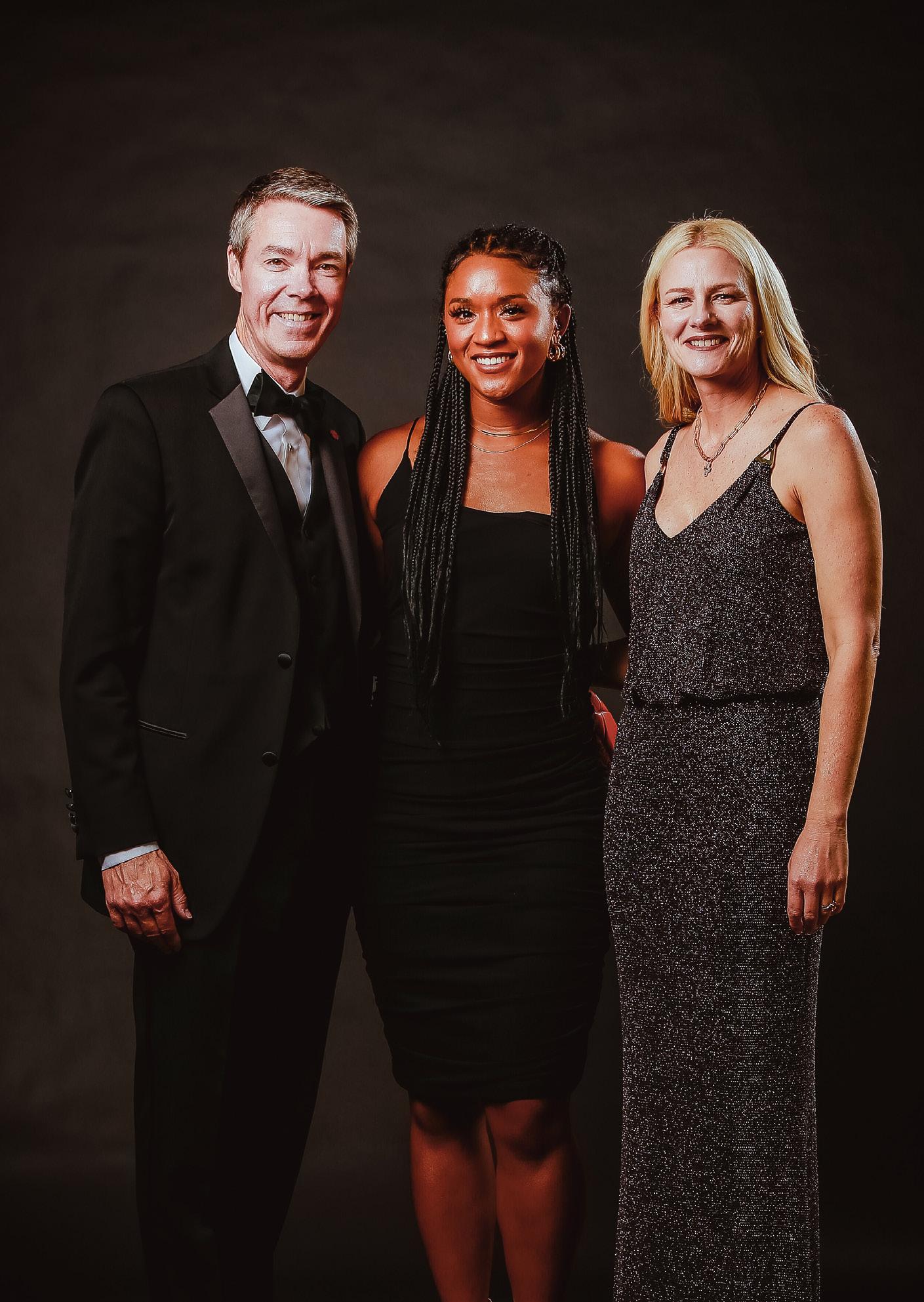
This is the list of all the generous supporters who have helped to provide a bright Orange future.
They are our Honor Roll.
Baseball 10.25
FULL SCHOLARSHIP
Dennis and Karen Wing (2) | Hal Tompkins
Sandy Lee | Jennifer and Steven Grigsby
Mike Bode and Preston Carrier (2) David and Julie Ronck
HALF SCHOLARSHIP
Sally Graham Skaggs
QUARTER SCHOLARSHIP
Bryant and Carla Co man
David and Grace Helmer | Jill Rooker Martha Seabolt | Dr. Scott Anthony John and Beverly Williams Richard and Lawana Kunze
Equestrian 1.25
FULL SCHOLARSHIP
Baloo and Maribeth Subramaniam
QUARTER SCHOLARSHIP
David and Gina Dabney Football 33.0
FULL SCHOLARSHIP
Bob and Kay Norris
Bryant and Carla Co man / The Merkel Foundation
David LeNorman | Dennis and Karen Wing (2) Dr. Mark and Beth Brewer
Ike and Marybeth Glass Jack and Carol Corgan Jim Click | John and Gail Shaw Ken and Jimi Davidson | Leslie Dunavant Mike and Kristen Gundy Mike and Robbie Holder
Ron Stewart | Ross and Billie McKnight
Sandy Lee | Tom and Sandra Wilson Wray and Julie Valentine James and Mary Barnes
HALF SCHOLARSHIP
Cindy Hughes | Donald Coplin
Doug Thompson | Ed and Helen Wallace
R. Kirk Whitman | Greg Casillas
Jim and Lynne Williams / John and Patti Brett Mike and Judy Johnson | Sally Graham Skaggs State Rangers | Tom Naugle | Nate Watson
QUARTER SCHOLARSHIP
Al and Martha Strecker
Arthur “Andy” Johnson, Jr.
Arthur Couch | Barry and Roxanne Pollard
Bill and Ruth Starr | Brad and Leah Gungoll Brian K. Pauling
Bridgecreek Investment Management LLC
Bryan Close | David and Cindy Waits
David and Gina Dabney | Dr. Berno Ebbesson
"Senior of Significance" by the OSU Alumni Association.
PHOTO CARTER STANTONDr. Ron and Marilynn McAfee
Eddy and Deniece Ditzler | Flintco
Fred and Janice Gibson | Fred and Karen Hall
Howard Thill | James and LaVerna Cobb
Jerry and Lynda Baker | John P. Melot
Jerry and Rae Winchester
John S. Clark | Ken and Leitner Greiner
Kent and Margo Dunbar | Paul and Mona Pitts
Randall and Carol White | Shelli Osborn
Roger and Laura Demaree
Steve and Diane Tuttle
Tony and Finetta Banfield General 1.25
HALF SCHOLARSHIP
Terry and Martha Barker
QUARTER SCHOLARSHIP
David and Judy Powell
Kenneth and Susan Crouch
Sally Graham Skaggs Graduate Athlete 0.75
QUARTER SCHOLARSHIP
Bob and Joan Hert | Neal Seidle
Tom and Cheryl Hamilton Men's Basketball 23.5
FULL SCHOLARSHIP
Baloo and Maribeth Subramaniam
A.J. and Susan Jacques Bill and Marsha Barnes
Brett and Amy Jameson Calvin and Linda Anthony Chuck and Kim Watson
David and Julie Ronck (1.25)
Dennis and Karen Wing (2) Douglas and Nickie Burns Gri and Mindi Jones
James and Mary Barnes | Jim Vallion
Ken and Jimi Davidson
Kent and Margo Dunbar | KimRay Inc. Sandy Lee | Mitch Jones Memorial
HALF SCHOLARSHIP
David and Julie Ronck
Dr. Mark and Susan Morrow
Jay and Connie Wiese | Sally Graham Skaggs
Stan Clark | Billy Wayne Travis Holloman Family
QUARTER SCHOLARSHIP
Dr. Scott and Lynne Anthony Gary and Sue Homsey
Michael and Heather Grismore Rick and Suzanne Maxwell
Robert and Sharon Keating
Steve and Suzie Crowder
Terry and Donna Tippens
Men's Golf 6.25
FULL SCHOLARSHIP
David and Julie Ronck Dennis and Karen Wing Jack and Carol Corgan Genevieve A. Robinson Baloo and Maribeth Subramaniam
HALF SCHOLARSHIP Simmons Bank
QUARTER SCHOLARSHIP
Bob and Elizabeth Nickles Garland and Penny Cupp Richard and Joan Welborn Men's Tennis 0.75
QUARTER SCHOLARSHIP
Tom and Cheryl Hamilton
HALF SCHOLARSHIP Jim McDowell Men's Men's Track 0.75
QUARTER SCHOLARSHIP
Dr. Mark and Susan Morrow Susan Anderson | Ken and Leitner Greiner
HALF SCHOLARSHIP
Mary Jane and Brent Wooten Soccer 1.0
FULL SCHOLARSHIP James and Mary Barnes Softball 0.75
QUARTER SCHOLARSHIP
Tom and Cheryl Hamilton Richard Melot Ann Dyer
Women’s Basketball 7.25
FULL SCHOLARSHIP
Brad and Margie Schultz
Ken and Jimi Davidson Mike Bode and Preston Carrier
HALF SCHOLARSHIP
Baloo and Maribeth Subramaniam Don and Mary McCall
John and Caroline Linehan Calvin and Linda Anthony Mike Bode and Preston Carrier
QUARTER SCHOLARSHIP
Bill and Roberta Armstrong Bill and Sally Cunningham
Donald Coplin | Jill Rooker
Richard and Linda Rodgers
Jo Hughes and Deborah J. Ernst Richard Melot
Women’s Golf 3.0
FULL SCHOLARSHIP
Baloo and Maribeth Subramaniam
Genevieve A. Robinson Louise Solheim
HALF SCHOLARSHIP
David and Julie Ronck | Dena Dills Nowotny
QUARTER SCHOLARSHIP
Amy Weeks | Kent and Margo Dunbar Women’s Tennis 0.5
QUARTER SCHOLARSHIP
Jamie Maher
Richard Melot Wrestling 11.25
FULL SCHOLARSHIP
A.J. and Susan Jacques
Bruce and Nancy Smith
Chuck and Kim Watson
Lon and Jane Winton
OSU Wrestling – White Jacket Club / Gallagher Endowed Wrestling Scholarship
OSU Wrestling – White Jacket Club / Myron Roderick Endowed Wrestling Scholarship
OSU Wrestling – White Jacket Club / Ray Murphy Endowed Wrestling Scholarship
OSU Wrestling – White Jacket Club / Tommy Chesbro Endowed Wrestling Scholarship The Cobb Family
HALF SCHOLARSHIP
Mike and Glynda Pollard Mark and Lisa Snell Bobby and Michelle Marandi
QUARTER SCHOLARSHIP
Danny and Dana Baze / Cory and Mindy Baze
Kyle and Debbie Hadwiger
John and Beverly Williams | R.K. Winters
To learn more about scholarship opportunities and how you may contribute, please contact:
Larry Reece (405-744-2824)
Matt Grantham (405-744-5938)
Daniel Hefl in (405-744-7301)
Shawn Taylor (405-744-3002)


Some people are just always in the right place at the right time.
Grace Yochum is one of those people.
That knack has served her well, from placing her in a college town where she never thought she’d be, to allowing her to perform at a level she never thought possible in the sport she loves.
And while that skill of knowing when and where to be may come naturally, a burning desire inside fuels Yochum to thrive in those situations she places herself into.
Yochum is the most prolific scorer in Oklahoma State soccer history, but Stillwater wasn’t always in her plans.
As a star at the club and prep level in Houston, Yochum committed to play collegiately at Mississippi State.
However, the Bulldogs underwent a coaching change, and Yochum wasn’t in the plans for the new sta , who broke the news to Yochum that her original scholarship o er was being reduced.
The news was devastating.
“It was a lot of uncertainty, and it really a ected my mental health during that time,” Yochum said. “It really took a toll on me emotionally. My teachers at school could see I was di erent; my friends knew something happened and I was di erent. That whole period, those couple months, really broke me down.”
Yochum’s club coach mentioned Oklahoma State as a new option. Yochum admits she had little knowledge of the program, but she called OSU head coach Colin Carmichael and made a trip to Stillwater for the Cowgirls’ College ID Camp.
The feedback was positive. Carmichael told Yochum he wanted to watch her play one more time, and he would make an o er.
Carmichael traveled to Yochum’s hometown to watch her play in a game with her club team, Albion Hurricanes ECNL.
“That was the game that was going to determine whether I played college soccer or not,” Yochum said. “I saw them and was very, very nervous, one of the most nervous games I’ve ever played.
“I thought I played decent in the first half, but at halftime, I look up and see them walking away. The first thought was, ‘I’m not playing college soccer — they didn’t like me.’ I almost started crying but tried to keep it together.”
Turns out, Yochum had nothing to worry about. Carmichael was sold
“Grace, unbeknownst to us, saw us leaving and made the assumption that we didn’t like her, didn’t want her and she had played bad,” Carmichael said. “She came o at halftime all upset, and her club coach had to try and calm her down and let her know that all was good.
“We laugh about it now, but obviously it wasn’t funny at the time.”
After being assured by her club coach that OSU was all in, the Mississippi State nightmare was finally in the rearview mirror and served as a driving force for what was to come.
“It ended up being one of the best things that has ever happened to me because it broke me down so much, but it brought me here to Oklahoma State,” Yochum said. “If that doesn’t happen, I wouldn’t be here.
“Looking back on it, as terrible as it was, it gave me a di erent level of motivation. It gave me a chip on my shoulder, and it made me want it more.
“That whole process did teach me a lot about myself. And it brought me here. If I had to do it all over again, to come here, I would.”
Motivation has never been a problem for Yochum. Ask anyone who knows her to describe her, and you’re guaranteed to hear “competitive” and “hates to lose.”
Yochum said that mentality has always been a part of her makeup, as has playing sports.
From a young age, Yochum gravitated to her brother, Matthew, and their activity of choice after getting home from school was anything having to do with a ball. Whether it was throwing a football, hitting tennis balls, kicking soccer balls or shooting hoops, Yochum was always participating — and bringing a refuse-to-lose attitude with her.
“That was my favorite part of the day, that and recess — just being outside and playing any sport,” Yochum said. “My mom would have to force me to come inside. I just wanted to be outside and play.
“In elementary school, they started a soccer game of girls versus boys. The girls would always lose, and then joined, and the girls started beating the guys. That was a whole thing — the guys were annoyed. I loved it.”
Yochum’s love of competing led her to focus on two sports — soccer and basketball.
By middle school, she was already making a name for herself and turning the heads of high school coaches.
Jyusef Larry, who has been the head basketball coach at Memorial High School for more than a decade, first noticed Yochum as a seventh grader when he would work with middle schoolers following his varsity practices on Saturdays.
“From that first day, (Yochum) was just di erent. She moved di erent — she had an explosion to her that our varsity kids didn’t have,” Larry said. “I worked with her a few Saturdays and just hoped with all get out that she would come and play basketball as well as do soccer in high school.”
Larry got his wish. Yochum starred for MHS on the hardwood, establishing herself as the program’s all-time steals leader while earning a nomination for McDonald’s All-America status.
“I’ve had kids that are more skilled, but there’s just something special about that drive internally and how she elevates her teammates around her — that’s what sets her apart,” Larry said. “I deem her the ultimate competitor — that’s just who she is. It wasn’t just in games, it was in practice every day. She really only had one bad day of practice, and it was after the whole Mississippi State thing when understandably she was taken aback by that.
“She knows how to compete — she knew how to compete at an early age. And that made up for some of the lack of skill that she had at times. Her ability to problem-solve, figure things out and compete at a super high level was amazing.”
Memorial High’s soccer coach, Lindley Amarantos, has similar sentiments for a player who amassed 49 goals and a program-record 46 assists on the pitch during a prep career that saw her claim numerous honors, including the Houston Chronicle’s All-Greater Houston Player of the Year award and 15-6A All-District MVP accolades in 2018.

“(Yochum) has a quiet way of being competitive — she’s not really vocal about it,” Amarantos said. “There’s so much natural athleticism there, and then she’s so smart and knows what to do and where to be, that’s what has allowed her to have so much success. Multiple times, we were in situations where we were behind or playing in a really tough game, and she just put it on her shoulders to go out there and take care of the situation.
“Her senior year, we won the state championship. In both the semifinal and final game, she went out there and in the first five minutes scored a goal. She just took it upon herself to go out there and set the tone from the get-go.”
As Yochum’s career progressed at the collegiate level, so did that desire to win.
“She’s just so competitive, and you see that every day — she just does not like losing. And I love that,” Carmichael said. “We lose a game, she’s angry. She eventually lets it go, she does a pretty good job balancing it, but that’s what drives her more than anything. She wants to be the best. She wants our team to win all the time.
“That’s what the great ones have. You just don’t like losing, you hate that feeling. And Grace, beyond the records and proving people wrong, just her will to compete drives her. She just doesn’t like not being the best.”
During her five-year career in Stillwater, Yochum’s will to win was on full display, and she helped lead the Cowgirls to nearly 50 victories, the third NCAA Tournament Sweet 16 appearance in program history and a Big 12 regular season championship.
“That just stems from that being in me — it’s in my DNA,” Yochum said. “Even in the middle school days, if we would lose a game, I wouldn’t talk after. My dad would want to talk about the game, and I would just be silent because I was so frustrated. It would literally ruin the rest of my week.

“When we lose here, I can’t stop thinking about it until the next game. Colin tells me don’t get so high on the highs and so low on the lows, but I do that.
“But it’s also what drives me because I don’t want to feel that way.”
Yochum will tell you she’s not a goal scorer.
That statement seems silly, laughable even, as she is in the Cowgirl Soccer record book as the top scorer in program history, with over 40 career goals and nearly 100 points.
More accurate would be to say Yochum is not a conventional goal scorer. From her defensive midfielder position, her scoring ability goes back to that knack for being in the right place at the right time.
“You think of goal scorers, you think of forwards. Well, Grace isn’t a forward — her strength is not playing up that high and having all the play behind her. She’s very good coming onto the game, crashing the 18 (yard box) late and things like that,” Carmichael said.
“She is a goal scorer. She’s just not your forward predator inside the 18. She finds other ways to score — she scores headers, she scores free kicks, she scores penalties, and she scores crashing the box late. That’s her strengths.
“I agree she’s not the prototypical natural goal scorer, but she’s a super goal threat to have on the field who just has so many ways she can hurt you.”
Yochum did that from the moment she set foot on campus in 2018. She started over 80 games for the Cowgirls, scoring four goals as a freshman and following that up with 11 as a sophomore and 12 in 2020 to rank among the NCAA leaders that season.
She’s also showcased a penchant for clutch scores — over half of her goals were game winners, and she led the NCAA with eight game-winning goals in 2020.
“I still don’t think I’m a true goal scorer — I’m a defensive player,” Yochum said. “But after my sophomore year of college, when I had that big season, that’s what kind of opened my eyes to ‘Oh, I could maybe do this.’
“But my focus is defense, and the goals just seem to come. I try to play back, see the game, quarterback and facilitate, be a playmaker. I just want to help the team.”
Yochum’s unique skillset allows her to do just that. She credits her impressive ball-hawking skills to those backyard sessions with her brother that saw her tracking down punted footballs and soccer balls.
“For a kid Grace’s height to move the way she moves is really impressive,” Carmichael said. “Athletically, her balance, her ability to cover ground on the field, tracking balls in the air — a lot of things you see in elite athletes, she has. Then her vision on the field and her ability to spray passes from the midfield is special.
“And for me, as far as her heading ability, Grace would be the best that we’ve had at Oklahoma State. Grace’s ability to track and judge a ball in the air and then to be a threat, just knowing what balls are going to end up in the 18 (yard box) and tracking them, she’s at the top of the list. And then her ability to redirect the ball intentionally is really good. Some kids are just happy to get their head on the ball, but Grace is intentional — she can direct the ball.”
Yochum graduated with a degree in education and a minor in coaching in May 2021.
She could have embarked on a professional soccer career or began her journey as a coach, both things she still aspires to do.
But she didn’t want her time in Stillwater to end so soon.
Along with the career goals record, Yochum also became only the fifth player in OSU history to earn All-Big 12 status four times. And as if she needed any further validation, both Larry and Amarantos make mention that Gary Koch, Memorial High School’s athletic director and head football coach for nearly four decades, says Yochum may be the best athlete — male or female — to ever come through Memorial High School.
Just as important, Yochum was having fun immersing herself into the community and the Stillwater club soccer scene, something she saw former teammate Jaci Jones do before her and wanted to emulate.

Following games at Neal Patterson Stadium, dozens of young girls and aspiring soccer stars would flock to Jones, who thrived on the interaction.
Yochum took over that role during her final two seasons — following every home game, her rock star status was on display as smiling girls made their way to the Cowgirl midfielder for high fives, photos, and lots of smiling moments.
“Seeing how those girls loved Jaci, I thought, ‘That’s what I want to be. I want to be that role model for little girls,’” Yochum said. “I’ve been working with those girls for just a year and a half but coaching them and then seeing them come out to the games has been so cool.
“Being able to dive more into the community and kind of give back to what’s been given to me has been amazing. And I’m still trying to do more.”
It helps that Yochum’s is an infectious personality.
“She’s such a phenomenal person. She doesn’t take anything too seriously even though she is so competitive,” Amarantos said. “Because she has that lightheartedness to her, it makes her approachable for everyone. She does a good job encouraging others to work hard just by being herself and coming out every day and working hard. She’s just so fun-loving and positive, and everyone else pulls energy o that and gravitates towards her naturally.”
Added Carmichael, “It’s been great to see her grow She’s a big part of the team o the field as well — on the bus, in hotels and restaurants, she’s lively, she’s a character, she’s always clowning and making people laugh.
“She’s that fun kid o the field, but she’s ultra-driven the moment it comes to soccer. She wants to win, she wants to compete, she hates losing. She balances it well and knows when it’s time to turn that switch and really get after it.”
Those traits bode well for a future coaching career as Yochum aspires to reward her future athletes with the life-changing experiences she enjoyed.
“I’ve always felt like I wanted to be a mentor, leader, coach, whatever that may be, and I’ve had some of the best teachers and coaches in high school who I still talk to who are so supportive and who have really lifted me up,” Yochum said. “After experiencing them doing what they’ve done for me, I want to do that. I want to be that person for other kids.
“Being in college has opened my eyes to how much pressure but how fun being a college coach would be. It’s a lifestyle — you are living it. It’s not a 9-to-5 thing, it’s your life.”
And Yochum already knows where she wants to lead that life — back at the school that gave her the opportunity to flourish. Yes, she says, she’s gunning for Carmichael’s job
“It’s always a joke between us, but that would be amazing,” Yochum said. “Ten, twenty, thirty years down the road, if I do come back (as head coach), that would be a sweet moment for me. For what this program has done for me, to
come back and lead it would be incredible.”
“I hope she gives me a couple of years before she tries to do that,” Carmichael said with a laugh. “But whatever that kid sets her mind to do, she’s going to be big time, whether it’s playing, coaching, teaching, no doubt she’ll be a success.”
That once may have been hard to fathom for the teenager who thought her soccer career was over.
But for Grace Yochum, being in the right place at the right time, in this case Stillwater, Oklahoma, was just another in a line of seized opportunities.
“I never in a million years thought it would be this rewarding, this fun, this challenging,” Yochum said. “No one really prepares you for this. You just have to experience it. I never thought I would have this much success.
“It’s amazing. I’ve been challenged and pushed beyond limits I thought I could reach. I’ve loved my time here. It’s why I came back for a fifth year. I tried to make the most of my time because I wanted to leave this place better than when I came in.”

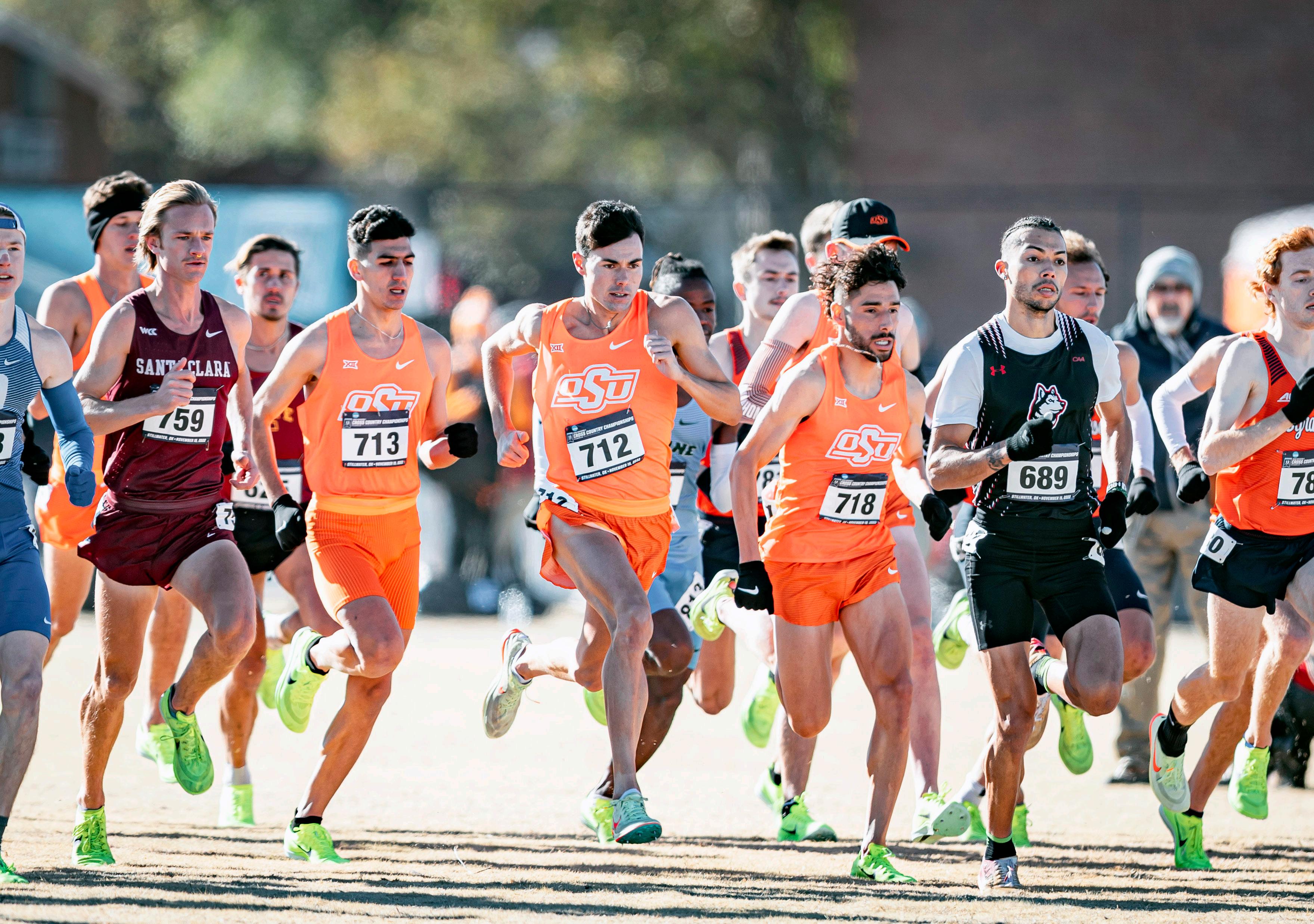
The OSU men's cross country team was agonizingly close to capturing the 2022 NCAA Cross Country Championship on their home course. Led by a trio of Cowboys
— Alex Maier (5th), Isai Rodriguez (8th) and Fouad Messaoudi (12th), along with fellow All-Americans Rory Leonard and Victor Shitsama — OSU scored 83 points, but lost out on a tiebreaker to Northern Arizona. It's the first time in NCAA history that the national champion was decided by a tiebreaker.


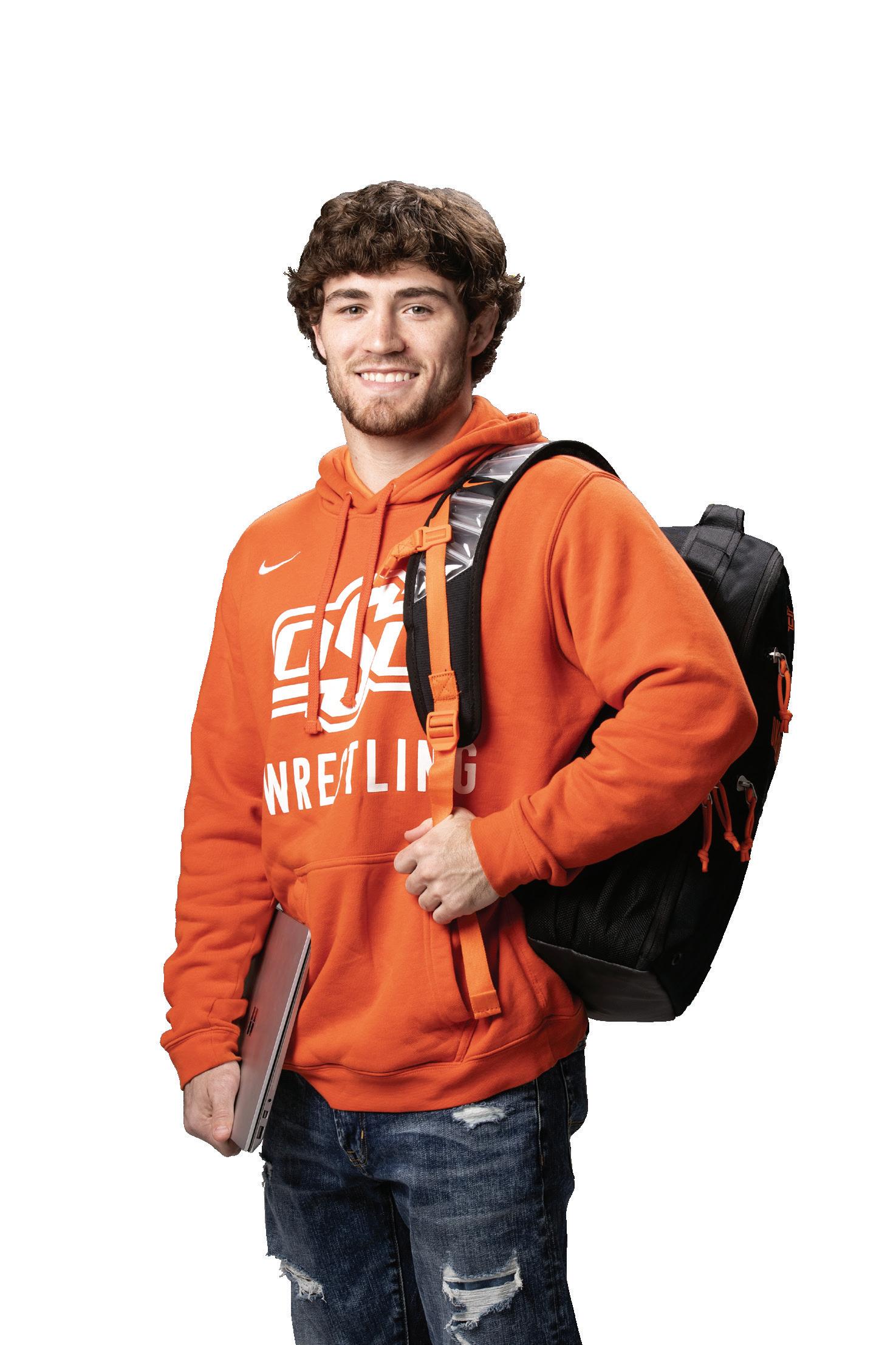

A sold out Boone Pickens Stadium welcomes the Cowboys onto the field Oct. 8. OSU's 2022 fall slate featured four consecutive sellout games — UAPB, Texas Tech, Texas and Iowa State — for the first time since the 2017 season. For 2023 season ticket and schedule info, visit okstate.com.

Dressed casually in an Oklahoma State wrestling jacket and cap, John Smith reclined slightly in the wooden chair and recounted a powerful memory of Gallagher Hall.

A videographer captured his every word, gesture and facial expression, but Smith appeared at ease, his voice ebbing and flowing as if he were chatting with an old friend. Smith shared this riveting anecdote: before he started coaching the Cowboys, long before he rose to his status as a living legend in the wrestling world, he was a 12-year-old towel boy on the mat when OSU won the 1978 Big Eight Championship. That night, Smith remembered, the crowd noise escalated to the point that light bulbs popped and shattered, causing fragments to rain on the mat. Smith was tasked with hitting the official on the back as a way to notify him when time expired—it was far too loud to hear the buzzer in the arena.
It is a legendary moment in the history of OSU Athletics.
 STORY BY HALLIE HART | PHOTOS BY BRUCE WATERFIELD
STORY BY HALLIE HART | PHOTOS BY BRUCE WATERFIELD
Because of OSU’s new subscription-based streaming service, that narrative is now preserved in Smith’s words, housed among numerous videos that offer rare insight into the lives of OSU student-athletes and coaches. This is the brilliance of OSU Max, the direct-to-consumer network designed for Cowboy fans.
When the athletic department unveiled OSU Max in December, it featured 150 pieces of creative content, and that number is rapidly ballooning. Stephen Howard , the Assistant Athletic Director for Digital Strategy, said the goal is for fans to never run out of videos.
“OSU Max is the behind-the-scenes, unfettered access into Oklahoma State Athletics that you can’t get anywhere else,” Howard said. “It’s following our teams, our people, diving inside locker rooms, going inside film study sessions, historical deep dives into our teams and even the Bedlam rivalry, as well as a house of massive amounts of historical content.
“It’s a must-have for anybody who is just a die-hard Oklahoma State Athletics fan, and what I love about it is, you’re going to hear some stories that you’ve never heard before.”
For those who pay the subscription fee of $8.99 per month, OSU Max offers a multitude of features. Bo Mattingly, co-founder of Sport & Story—the organization partnering with the athletic department in this endeavor—likened OSU Max to a “mini Netflix” geared toward Cowboy fans. The videos are carefully categorized, much like the comedies and dramas on familiar streaming services, but these documentary-style pieces appeal to different sectors of the OSU community. Analytical minds can rejoice in the detailed dissection of games in the “Cowboy Film Room” videos, while history buffs might prefer to bask in the nostalgia of “Cowboy Rewind.”

At its core, OSU Max is a channel for storytelling, using all types of videos to connect fans with the individuals who have built and enhanced the university’s rich athletic tradition. Whether a subscriber watches members of the Cowboy basketball team gather at coach Mike Boynton’s house for dinner or hears Cowgirl softball players discuss the importance of enjoying their sport, the universal human emotions are palpable. Those authentic, peoplecentric stories create the unique appeal of OSU Max.
“There’s a lot of content being produced by schools,” Mattingly said. “But there’s very little longform storytelling where you can really humanize people, really get to know who they are and what they’re about.”
After identifying this need in college athletics, Mattingly had to implement his idea with programs that offered treasure troves of compelling stories.
This is how OSU Max was born.
“The possibilities, I think, are very exciting. And they are limitless.”
Chad Weiberg
It started with “Our Time: Oklahoma State Football.”
As Mattingly consulted with coach Mike Gundy and others involved with OSU Athletics, the plan took shape: Sport & Story could document the behind-the-scenes operations of the Cowboy football program for a series that would air on ESPN+ throughout the 2020 football season.
Mattingly, whose work is based in Arkansas, saw value in highlighting OSU. Gundy’s name is familiar to people across the nation, Mattingly pointed out, so “Our Time” could attract viewers far beyond Stillwater. For years, Gundy’s program had exemplified consistency, Mattingly said. With running back Chuba Hubbard and wide receiver Tylan Wallace returning instead of declaring for the NFL Draft, 2020 looked like an intriguing year to feature the Cowboys.
When Mattingly immersed himself in OSU Athletics, he realized the football series could be a launchpad for something greater. The evidence surrounded him: banners for 52 team national championships across multiple sports, an All-American list expansive enough to cover a wall in Heritage Hall, and prestigious trophies and Olympic medals for OSU alumni.
“This is a storied athletic program,” Mattingly said. “And sometimes, I think Cowboy fans need to be reminded of that. Sometimes, we’re too close to our own backyard, and someone else comes in, and they go, ‘Wow, this is a really nice backyard.’”
Mattingly was that observant visitor who noticed something extraordinary.
This outside-looking-in perspective provided fresh, innovative angles for “Our Time,” but it also meant he had to foster mutual trust with the athletic department. This was a Cowboy football program that operated with smooth efficiency: running through drills at practice, assembling coaches for meetings, taking “The Walk” along Hester Street to Boone Pickens Stadium on game days. Would a camera crew be an obtrusive presence disrupting the flow of it all?
Initially, everyone had to adjust to the change, but it didn’t take long for doubts to subside. Coaches and players carried on as if the cameras had always been there. Camera crews blended in with the program, even when unavoidable circumstances added a complex layer to the Cowboys’ season.
No one could ignore the uncertainty looming over college football because of the COVID-19 pandemic, so Sport & Story weaved that element into the narrative, featuring footage of players and coaches taking COVID tests. The camera operators adhered to those protocols, too.
As Sport & Story collaborated with OSU Athletics and welcomed feedback from the communications staff, Athletic Director Chad Weiberg—then the Deputy Athletic Director reporting to Mike Holder—noticed how well the process worked.
“They came in here, and they just became part of the team, really, and weren’t a distraction at all, and did a good job of telling the story and highlighting the program,” Weiberg said.
“I think that was a big part in just building the relationship with them, knowing the quality and the kind of people that they were, and just being comfortable working with them.”
Because of those bonds, leaders in the athletic department had faith in Sport & Story to provide creative direction for OSU Max. “Our Time” was one of several reasons this trust proliferated.
Kevin Klintworth , OSU’s Senior Associate Athletic Director for Communications, said he enjoyed Mattingly’s podcasts, one of Sport & Story’s earliest ventures. In September, the University of Arkansas partnered with Sport & Story to debut Hogs+, the streaming network for Arkansas fans.
Mattingly also worked with documentarian Christopher Hunt , the director of the “Eddie” documentary that delves into the triumphs and tribulations of Eddie Sutton’s historic coaching career. OSU Max would be in the hands of established professionals.
“One of the things that we’re really fortunate with is to have somebody like Christopher Hunt, to have somebody like Bo Mattingly,” Howard said. “Not only are they a part of the dayto-day operation for what Sport & Story does, but also, they know Oklahoma State. They know what’s going on.”
The idea for OSU Max sprouted as Sport & Story continued to collaborate with the athletic department. Mattingly recognized large portions of college fanbases can’t regularly attend games, so a streaming network would give those people a new way to connect with their beloved school. Klintworth realized Orange Power Studios, OSU’s in-house production agency, couldn’t devote much time to longform storytelling because staff and resources were concentrated toward producing video board footage, third-tier TV broadcasts and creative content.
OSU Max could offer solutions. The key was making sure all of OSU’s athletic programs would buy in.

“you want people to see the onion peeled back a little bit and see more of the personal side and how we operate when the lights aren’t necessarily on in the arena.”
Boynton sat behind the steering wheel and drove along Sixth Avenue as his young son, Ace , peered out the back driver’s side window.
Boynton’s daughter, Zoe, was in the other back seat, joining her brother and dad on the trip to elementary school. Boynton walked his two kids up to the school building, exchanging hugs and fist bumps before returning to his vehicle. Next, Boynton headed to OSU’s campus and started his workout routine on a stationary bike, sweat collecting on his forehead as he spoke to the camera while wearing his wireless earbuds.
These ordinary moments in Boynton’s morning routine are recorded, arranged and paired with his voiceover to create a heartwarming narrative, providing fans with snapshots of his daily life outside coaching.
“I appreciate our administration for being a little bit forwardthinking and doing something like this,” Boynton said. “I don’t know how many programs provide that kind of behind-thescenes access for their fans. It’s awesome, obviously, to get that type of exposure, for recruits, because you want people to see the onion peeled back a little bit and see more of the personal side and how we operate when the lights aren’t necessarily on in the arena.”
For all of this to happen, Sport & Story and OSU Athletics depend on a fusion of different perspectives, a conglomerate of creative forces.
Leaders such as Boynton and softball coach Kenny Gajewski—two individuals who have been especially receptive to the idea, Howard said—have to welcome the camera crews into their programs, allowing videographers to seek and follow storylines. Weiberg’s focus on a bold, cutting-edge presence for OSU Athletics has shaped the vision for OSU Max. Klintworth and Howard, along with sports information directors, provide extensive knowledge of the athletic programs, and OSU media personalities such as Jessica Morrey, Deion Imade and Dave Hunziker also contribute to the content.
Of course, the other major piece of the puzzle is Sport & Story’s legwork. With Mattingly’s direction, content creators discover, record and edit stories that present familiar teams in new ways. Mattingly said often, three to five staff members are on campus to capture videos and collaborate with Howard and Klintworth.
“The thing that makes it work is that none of us duplicate our skills,” Klintworth said. “Everyone has their own niche that’s their specialty, and OSU Max kind of marries those things into a final product.”
Although the heart of OSU Max lies in Stillwater, the behindthe-scenes work branches across the nation. One producer is based in the Northeast. Mattingly lives in Arkansas. Thanks to file-sharing technologies, a single piece of content can easily float from person to person, undergoing tweaks and edits along the way until it morphs into a polished final cut.
Story ideas germinate in a variety of ways. Sometimes, SIDs might help videographers identify important topics, but often, the camera crews delve into programs and let stories arise naturally.
Sydney Pennington , a fifth-year third baseman on the Cowgirl softball team, said she recently participated in an OSU Max interview with Gajewski and shortstop Kiley Naomi . Instead of pigeonholing the softball team into a storyline, the videographers presented open-ended questions, simply asking Pennington and Naomi to tell them about the program. Athletes and coaches are empowered to define their narratives.
“That was pretty cool,” Pennington said. “We kind of just gave our story and how the program’s grown so much in the last four or five years. I think it shows on the field how much fun we have, but now, we’re going to be able to show them all the time.”
The human element of OSU Max shines because studentathletes and coaches are featured in their natural environments. Pennington, Naomi and Gajewski spoke in front of the Cowgirls’ wooden lockers illuminated with orange lights. In a different video, as Cowboy wrestler Daton Fix reflected on the time he did 100,000 push-ups in one year, the Christmas tree in his apartment glimmered in the background. Another video captured basketball players filling their plates in Boynton’s kitchen and laughing while seated around his dining table.
These mini-documentaries are slices of OSU athletes’ lives, not staged scenes.

“We’re just gonna act like ourselves and just go about our daily lives,” Pennington said. “And that’s who we are.”
This authenticity is making an impact on longtime fans.
Doug Shivers subscribed to OSU Max as quickly as he could.
After learning about it on Twitter, Shivers, an OSU graduate and memorabilia collector, was immediately interested in the idea of a Cowboy-centric streaming platform. He also decided to recommend it to a fellow OSU fan, a friend who lives in St. Louis.
For a few days, Shivers wondered what his friend thought of OSU Max. Then Shivers received a text message that explained his buddy’s delayed response.
“He’s like, ‘I’ve been watching that football highlight reel (on OSU Max) for like three days now,’” Shivers said. “So he was impressed. He was a believer after he subscribed.”
OSU Max is reaching numerous alumni and devoted fans, and the network is still in its infancy with plenty of room to grow. Eventually, OSU Max will be available on an over-thetop (OTT) app, which means subscribers will have a way to access it via services such as Roku and Apple TV, and a fulltime staff will work in Stillwater.
Currently, fans can receive additional content from the free Oklahoma State Cowboy Brew newsletter, which includes promotional information about OSU Max videos, along with features such as OSU trivia and weekly sports schedules. Cowboy Brew and OSU Max subscriptions are available at osumax.com
“The possibilities, I think, are very exciting,” Weiberg said. “And they are limitless.”
As the library of videos expands, OSU Max will encompass every Cowgirl and Cowboy athletic program. Shivers said he appreciates the videos dedicated to teams that don’t typically receive the same level of national attention as football, though he enjoys the football content, too.

He also pointed out how OSU Max can have longevity, referring to its exclusive footage as “priceless.”
“In the future, there’s going to be people that want to go back and see what happened,” Shivers said. “When somebody comes to college 10 years from now and somebody talks about, ‘Well, I remember when they beat Notre Dame,’ well, then it’s going to be easy to go back and look at the film room things.”
OSU Max preserves the voices of the past, amplifies the stories of the present and carves a cutting-edge path into the future. No matter where a video fits into OSU’s rich timeline, it supports one of Weiberg’s major goals: showing fans the personalities of OSU Athletics.
“I’ve often said, I wish they could see a lot of the things that we get to see off of the field because it’s incredible,” Weiberg said. “We have incredible young people that are doing amazing things.”
This human element is greater than sports, and it’s also a reason people love sports. Klintworth said he has a friend who didn’t follow the NBA, but when she learned about LeBron James’ philanthropic work in schools, she became an instant fan.
OSU Max revolves around this concept. Dedicated Cowboys can always deepen their connections to OSU, and new fans can emerge when they find inspiration in the story of an athlete or a coach.
“You just don’t know what chord it’s going to strike with someone,” Klintworth said. “Or what action or what memory or what event will basically have them say, ‘I’m a Cowboy for life.’”
Regardless of someone’s level of familiarity with the university, OSU Max offers constant opportunities to learn something. Although Weiberg described Klintworth as a “walking encyclopedia” of Cowboy knowledge, OSU Max is delving into stories that even Klintworth hasn’t heard.
Klintworth said he always wanted to meet someone who could provide a firsthand account of the wrestling action that caused the Gallagher Hall light bulbs to shatter.
As he watched a video on OSU Max, he realized he already knew a famous witness.
To Klintworth’s surprise, it was John Smith.


The Cowgirl Cross Country team celebrates a program-best fourth place team finish at the 2022 NCAA Cross Country Championships, held Nov. 19 in Stillwater. OSU was led by freshman sensation Natalie Cook who finished the 6K seventh overall (19:46.3). Teammate Taylor Roe crossed the finish line in 13th (19:56.4) to also earn All-America honors. Oklahoma State was the only school to have both the men's and women's teams earn a place on the podium.




